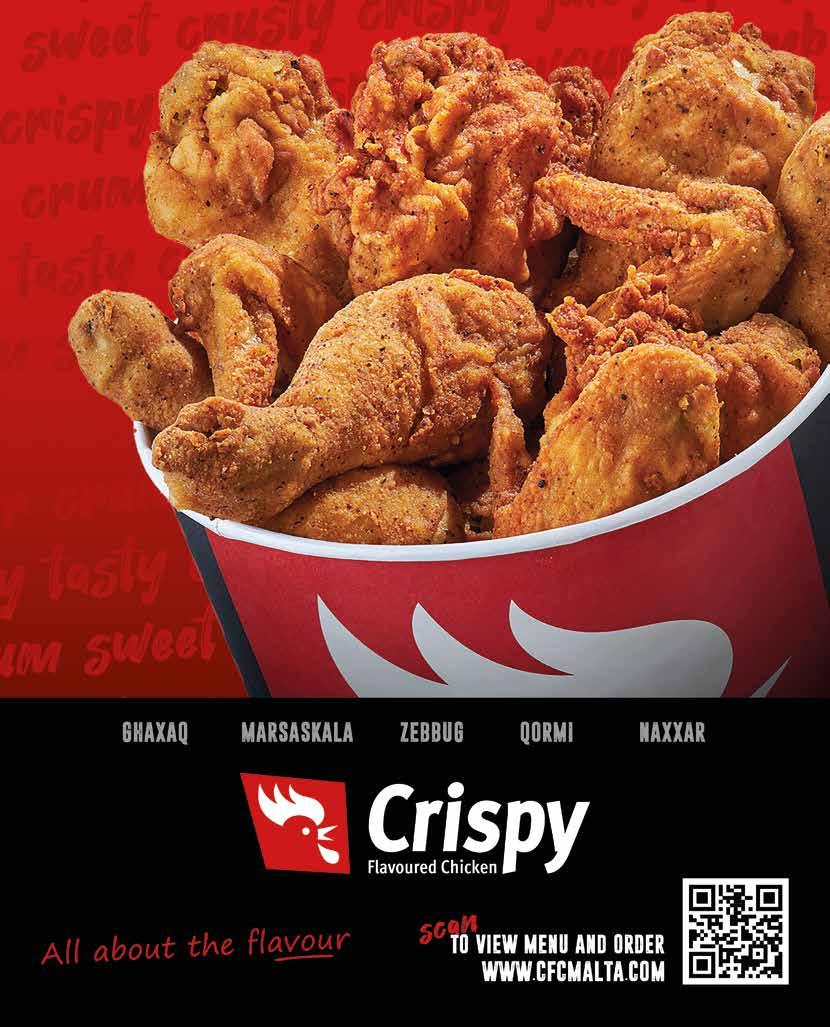THINGS TO DO
The events you shouldn’t miss p. 12
EXPLORE
The top 6 villages and their environs to explore p. 20
ARTS & CULTURE
Meet inspirational artist Wallace Falzon p. 74



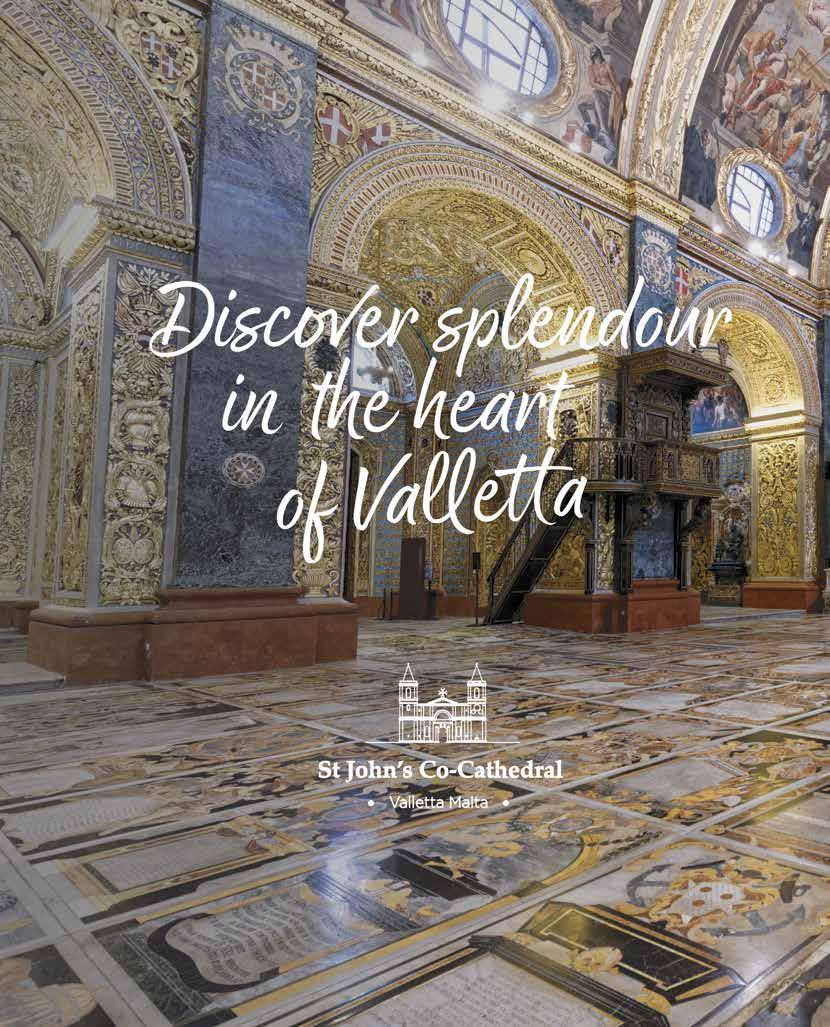




The events you shouldn’t miss p. 12
The top 6 villages and their environs to explore p. 20
Meet inspirational artist Wallace Falzon p. 74







This season’s calendar of events is brimming with all sorts of activities – from musical performances to delightful shows. Martina Bartolo Parnis highlights the ones not to miss.


Most of the islands’ villages are steeped in history and surrounded by lush countryside. Rebecca Anastasi picks six of the most bucolic and sheds light on their main attractions.
What’s not to love about hearty, genuine local fare? Sarah Muscat Azzopardi visits four of her favourite low-key eateries to meet the affable people behind them.

Find the perfect place to wine and dine on the islands with our handy restaurant guide.
Artist Wallace Falzon
Photography: Andrew Zarb
Rafel Sammut is not just an excellent chef; he’s also got a heart of gold. Rebecca Anastasi meets him to find out more about his charitable initiatives.
PUBLISHERS
Content House Group
ADVERTISING
Director of Sales & Operations Lindsey Napier
Senior Brand Sales Executive Wanaha Camilleri
An in-depth look at what it takes to set up a business in Malta, the new and emerging economic sectors attracting local and international investment, and why the islands are considered a business and financial services hub in Europe.
What’s in this season? Sarah Muscat Azzopardi speaks to fashion insiders Daniel Azzopardi and Caroline Paris to find out what they’re wearing this Winter.
Operations & Client Relationship Manager
Elena Debattista
Operations & Accounts Manager Sue Ann Pisani
Nicholas Cutajar
Rebecca Anastasi, Martina Bartolo Parnis, Sarah Muscat Azzopardi
Wallace Falzon’s art journey only started in earnest some 10 years ago, but he immersed himself in this wonderful world and developed a vast and eclectic collection of compelling works. He shares his story with Sarah Muscat Azzopardi.
Content House Group, Mallia Buildings, 3, Level 2, Triq in-Negozju, Zone 3, Central Business District
Birkirkara CBD 3010
T: +356 2132 0713
E: info@contenthouse.com.mt
W: www.contenthouse.com.mt
Published since 2005, Guide Me is the largest and the leading independent guide for visitors in Malta and Gozo. This issue covers the Winter/early Spring 2022/2023 period. Guide Me is distributed free of charge through leading hotels around Malta and Gozo. The publication is also distributed for free from MTA offices in Malta and Gozo. It is also sold at leading newsagents in Malta and Gozo, including those at the MIA and Gozo Channel ferries.

Editorial opinions expressed in Guide Me are not necessarily those of Content House Group and the company does not accept responsibility for advertising content.
All rights reserved. Reproduction in whole or in part without written permission of the publishers is strictly prohibited.

When visiting a country for the first time, many of us seek to discover its authentic aspect besides the must-dos and must-visits; to explore its nooks and crannies, and its hidden gems; to meet the locals; and to savour local experiences and delights. This issue of Guide Me aims to be your insider guide to help you make the most of your stay and get a genuine taste of all that the islands have to offer.
We start by shedding light on the unmissable events taking place between December and early Spring – from concerts to shows, parties and festive celebrations, the cultural calendar is brimming with quality productions and excellent talent.
We also entice you to put on your walking shoes and get lost in the islands’ villages and their environs. The islands are dotted with charming towns and villages, but in our Explore section, we select six and highlight their main attractions. These villages are also home to delightful eateries, from Michelin-starred, glitzy restaurants to low-key, traditional diners. In the Food and Drink section we focus on the latter and choose four of our favourites across Malta and Gozo. We meet their affable owners who show us round and share their stories.

On the subject of food, in this edition we also meet Rafel Sammut, a young but accomplished restaurateur. Rather than discussing his eatery though, we explore his philanthropic work, which indeed centres around food. His generosity is extraordinary... we invite you to turn to page 50 to meet this man with a heart of gold.
On a lighter note, we delve into the season’s key fashion trends. We ask fashion insiders Caroline Paris and Daniel Azzopardi to share some tips on what to wear this Winter to be right on trend. And last but not least, in the Art & Culture section we get to know Wallace Falzon, a talented artist with an inspirational story. He gives a personal insight into the healing power of art.
With all this and more, we hope you enjoy this edition of Guide Me.
The islands are heaving with events and activities for the young and old alike at this time of year – be it a side-splitting comedy show, a rousing musical performance or an enchanting festive attraction, MARTINA BARTOLO PARNIS highlights the ones you shouldn’t miss.

Don’t be fooled into believing that the islands are best visited during the sweltering Summer months. Quite the contrary, during the colder season, when taking a stroll along one of the islands’ scenic promenades or walking around one of the many old cities without breaking a sweat, there is, in fact, lots to enjoy.
Make time for a music event (or two) during your visit – there really is no shortage of festivals, concerts and performances throughout the coming months that will enrich your time here. Some of the greatest music written for the organ will be performed by world-famous musicians in churches and cathedrals across Malta (until 6 December) as part of the Malta International Organ Festival. Performances include an organ and viola concert at the Sacro Cuor Parish Church in Sliema and an organ and trumpet concert at St Mark’s Church (Augustinians) in Rabat, Malta.
Marking a spectacular start to the festive music season is The Malta International Christmas Choir Festival (2-4 December) Here, enchanting choir ensembles from various European countries descend on the island for a joyful celebration of music



performed inside stunning churches found in the Three Cities, Kalkara and Żabbar. Among the confirmed choirs participating this year are Music & Joy Choir from Bulgaria, the Tota Pulchra Choir from Malta and the Piccolo Grande Coro Oschirese from Sardinia, Italy.
Film fans will be pleased to note a live concert performed by the Malta Philharmonic Orchestra: Pirates of the Caribbean – The Curse of the Black Pearl. The family-friendly symphonic cinema event offers audiences an immersive musical experience for one night only (3 December, www. showshappening.com) at the Malta Fairs and Conventions Centre (MFCC) in Ta’ Qali.
Over on the sister isle, the Gozo Youth Wind Band and Orchestra will be wrapping up its year-long string of events with a vibrant Christmas concert at Teatru Astra, Festive Rock and Pop at the Astra (6 January), with the participation of the Piccole Stelle choir.
A fixture on the island’s January calendar is the Valletta Baroque Festival (11-29 January, www. festivals.mt) – a prestigious two-week long festival that plays out within many of Valletta’s stunning, historical, baroque-era venues, including the St John’s Co-Cathedral and Teatru Manoel. Under the artistic direction of Kenneth Zammit Tabona, the cream of international musicians in the baroque music scene will wow audiences, who eagerly await the 2023 edition after a two-year hiatus.
And just ahead of the start of Spring, on 11 March, classic rock lovers will be in for a treat – a Classic Rock of the 60s and 70s concert will be staged at the beautiful Mediterranean Conference Centre in Valletta.
Gozo’s Teatru Astra will be staging the much-loved musical that follows the story of the von Trapp family in Vienna. The Sound of Music (17-19, 25 March, www.showshappening.com), which won the hearts of audiences worldwide with its uplifting soundtracks upon the release of the film in 1965, including ‘My Favourite Things’ and the title track, ‘The Sound of Music’, will take audiences on a musical journey that guarantees a good time.
Do not miss the chance to see an impressive acrobatic performance with Amora by Cirque Du Soleil. This heart-racing show (until 18 December, www.maltashows.com) is based on a compelling journey of love, adventure and community, created uniquely for Malta. Cirque Du Soleil has an unmatched track record for leaving audiences glued to their seats at the Mediterranean Conference Centre in Valletta, and this year’s show is expected to be no different.
For a nostalgic sleigh ride through the golden age of pop and rock ‘n’ roll, take note of a twonight performance (12-13 December, www. showshappening.com) at Hilton Malta by one of the

Make time for a music event (or two) during your visit –there really is no shortage of festivals, concerts and performances throughout the coming months.Amora by Cirque Du Soleil. Photo: MaltaShows Official
UK’s most popular touring rock ‘n’ roll shows, That’ll Be The Day. Titled none other than Rock ‘N’ Roll Christmas, you can expect a lively mix of traditional and Christmas songs, as well as comedy sketches and impersonations.

Of course, Christmas time in Malta wouldn’t be the same without the highly anticipated pantomime performances, and, despite being peppered with many Maltese quips, you’re guaranteed a good laugh. Masquerade Malta will be filling Valletta’s magnificent Teatru Manoel with seasonal cheer with Ċikku and the Chocolate Panto (23 December-8 January 2023, www.teatrumanoel.com.mt). It features a stellar cast led by Malcolm Galea, as the hilarious Dame Desserta, who leaves a lasting impression on audience members of all ages every single time. In Gozo, meanwhile, FM Theatre Productions and Teatru Astra present Jack and the Beanstalk – The Rock ‘n’ Roll Panto, which follows the adventures of Jack and his mother, Dame Fażola Bigilla, played by panto veteran Edward Mercieca. Catch one of their shows (26-30 December, tickets. tnd.com.mt) at Teatru Astra in Gozo’s capital, Victoria.
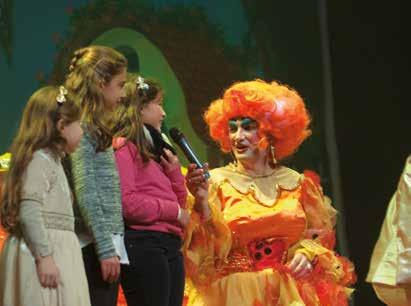
A highlight on Teatru Manoel’s 2023 calendar is a performance of the iconic opera Tosca, by Italian composer Giacomo Puccini. Directed by and featuring José Cura, accompanied by the Malta Philharmonic Orchestra, it is a must for opera enthusiasts (5, 8, 10, 12 March, www.teatrumanoel. com.mt)
It is the time of year to let our hair down, and what better way to do so than with a good dose of comedy? Theatre company MADC presents A Kick in the Baubles (25-27 November, 2-4 December, www.madc.com.mt), a Christmas special by Gordon Steele that follows the story of Frank, who is dreading a drink-fuelled Christmas day with his in-laws and their antics. Taking place at the MADC Playhouse in Santa Venera, it is a definite laugh for anyone aged 14 and over.
With actor and comedian Kevin Naudi, you never quite know what to expect – except for a side-splitting standup performance that is controversial and funny in equal measure. For two nights in December, you can watch him live on stage in Kevin Naudi – I have something to say at none other than Teatru Manoel in Valletta (2-3 December, www.kevinnaudi.com) – there’s a feeling that his fifth special stand-up show will be one for the books.
One cannot speak of comedy in Christmas time without mentioning Comedy Knights – a talented troupe of actors and comedians who, for 10 years running, has left its audiences in stitches with hilarious sketches that hold up a mirror to Maltese society, while taking witty jabs at public figures through much-loved characters, as well as new introductions. This year, the cast of Comedy Knights: 10 Years Years of Laughter (26-27, 29-30 December, 2, 4, 6-7 January, www.comedyknights. com), will be joined by revered comic and actor, Alan Montanaro, for what is certified to be one of their best performances to date.
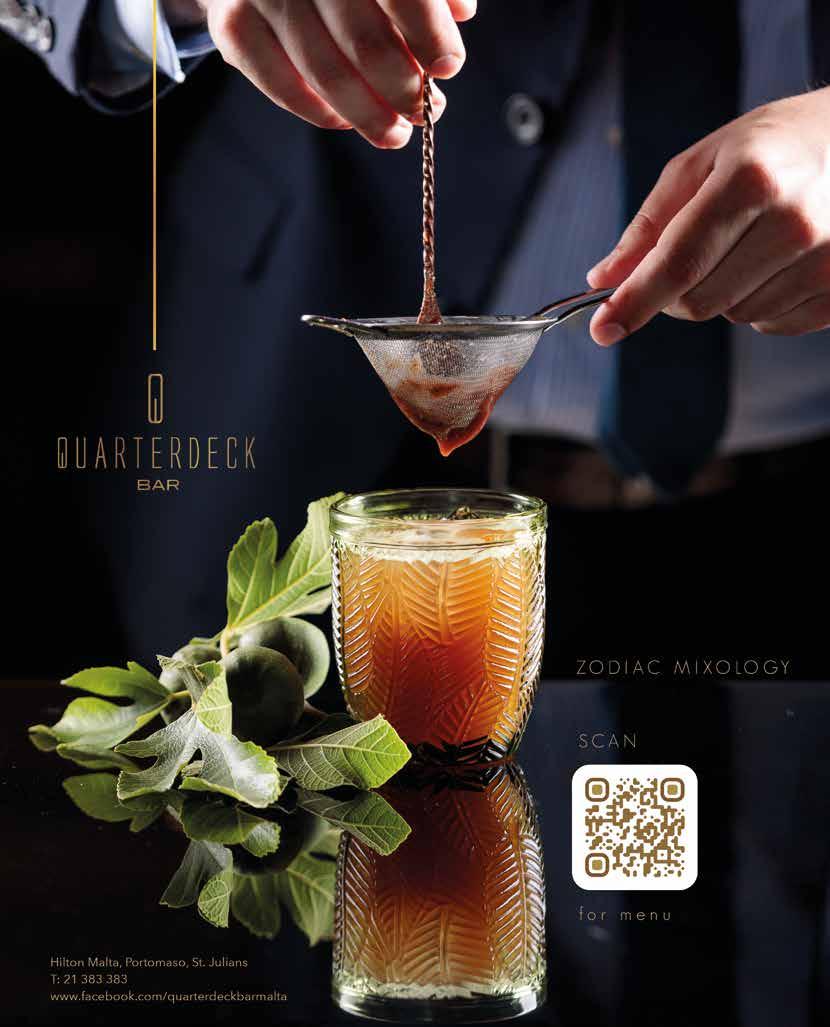

The Magical Illuminated Trail (until 7 January, www. illuminatedtrailmalta.com) is back and brimming with attractions that capture the imagination of visitors of all ages. Now in its third year, this after-dark adventure for the family is set on the grounds of the charming Verdala Palace in Buskett, and features hundreds of lantern-illuminated sculptures, light installations and projections, including the North Pole, Santa’s Toy Shop and the new Christmas Village, where various festive souvenirs – including personalised baubles – will be available to buy.
Throughout the month of December and early January, several retail and commercial places of interest across the island host their own Christmas attractions, such as The Valletta Waterfront Christmas Wonderland (www.vallettawaterfront. com), which welcomes guests with a staggering 35-foot Christmas tree at its entrance. Holiday-themed activities will be held until 6 January here, including live entertainment and roaming mascots for the younger visitors.
Across the water, at Tigné Point shopping mall in Sliema, a visit to Christmas at Pjazza Tigné (www.tignepoint.com) is highly recommended. The large, open square opposite the mall sets a magical scene, and visitors can sample varied delights from mulled wine and roasted chestnuts to Bavarian hot dogs and traditional Venetian antipasti, and purchase unique artisanal Christmas gifts for loved ones – or yourself!
Malta’s only water park, Splash & Fun in Baħar iċ-Ċagħaq, will also be transforming its grounds for the festive season. At Santa’s Park (3-4 December, www.showshappening.com), visitors will be treated to countless Christmas-themed creative activities, games, animators, entertainers, and a visit from Santa himself.
And over in Popeye Village, expect Christmas Activities for the young and young at heart for an entire month, between 8 December and 8 January.

You might think these events are enough to satisfy your want for festive cheer, but you haven’t seen it all without a visit to Fairyland. Pjazza Tritoni at Valletta’s entrance is transformed into Santa’s City (8 December-6 January, www.fairylandmalta. com) – complete with a brightly-lit Ferris wheel, an iceskating rink, a Christmas market selling a lovely choice of stocking fillers, food and drink, and plenty of festive surprises throughout the month. You cannot visit the capital without stopping here and joining in the merriment – whether for an hour or a day.
Gozo’s calendar of festive events is also brimming with fun activities, from an animated nativity Village (Bethlehem f’Għajnsielem) to wonderful concerts and much more – visit www.visitgozo.com for a full run-through.
As the year draws to an end, there’s one thing you can count on to wrap it up with a bang: a good party. Kick off the season with A Night With Debrii @ The Club House (7 December, www.g7events. com), where DJ Debrii and friends will pump up the crowd at Gianpula Village on the eve of a public holiday.
Then, of course, you can begin your countdown to New Year’s Eve and take your pick of parties and large-scale events held across the islands. Festivities for Gozo New Year’s Eve 2023 will revolve around the capital, Victoria, specifically in the main square where a spectacle of musicians and performers will entertain the crowds (www. visitgozo.com). In Malta, large crowds gather in the capital city, Valletta, which transforms into one large party arena as restaurants and cafés ring in the new year, while a national countdown is typically held in St George’s Square, opposite the Grandmaster’s Palace.
If you’re after a scaled down NYE event, there are plenty to choose from. Consider NYE 2023 with Ivan Grech and his band for an elating night of great music. The gala reception will be held at The Xara Lodge in Rabat (www.showshappening. com), and the crowd is limited to 500 guests. Alternatively, the Versatile Brass NYE Gala, a blacktie event which will be held at the InterContinental Malta (www.versatile-brass.com), is a popular choice. Hosting its fifth New Year’s Eve event, the 18-piece brass band is a sell-out success wherever it goes, and this, surely, will be no different.
Boasting sweeping vistas, lush surrounding countryside and charming streets, many of Malta’s quaint towns and villages are a treat for any visitor to the island. Here, REBECCA ANASTASI introduces six of the most amiable Maltese villages.

Located in the south-west of the main island, Siġġiewi sits between two green valleys, a few kilometres away from Malta’s old capital, Mdina. Its picturesque square is home to colourful, traditional Maltese residences, which evince an air of grandeur, and a breath-taking parish church, dedicated to St Nicholas of Bari, and designed by the 17th century architect, Lorenzo Gafà.
However, the village’s appeal goes beyond the few kilometres surrounding the parish square, for, a short drive away, lies the coast around Għar Lapsi, from which small-scale Maltese fishermen set off in the early mornings to reap the bounty of the sea. If the weather is too cold, swimming may be out of the question, but take a moment (or a couple of hours) to savour the fresh seafood served at Carmen’s Bar and Restaurant, nestled right on the quay from which the boats leave. The owners know all the local fishermen and are first in line to get the best stock of calamari, king prawns, seabass, octopus and mussels, which are offered side-by-side with Maltese classic dishes, such as the ubiquitous ftira biż-żejt (flattened
bread served normally served with olives, tuna, capers and olive oil).

Siġġiewi also offers long, winding walks and hiking trails along the island’s dramatic southern coast. Head out from Għar Lapsi, towards the north on the verdant Fawwara route, where Malta’s blooming landscape shows off its tones. Yet, for a deeper understanding of the way in which Malta’s natural resources have impacted the development of its inhabitants, head to The Limestone Heritage, on the road to the centre of Siġġiewi. This attraction celebrates the country’s yellow rock, the foundations on which the islands have flourished; and it also features an animal park where your young ones can pet some furry friends to their heart’s content.

Siġġiewi’s picturesque square is home to colourful, traditional Maltese residences, which evince an air of grandeur.Għar Lapsi. Photo: Mario Galea / viewingmalta.com

South of Siġġiewi, the quiet village of Qrendi, close to the towns of Mqabba and Żurrieq, is a must for anyone interested in Malta’s rich prehistoric past. The village is home to the 5,000-year-old neolithic temples of Ħaġar Qim and the Mnajdra archaeological park, both of which offer a glimpse into the ancient societies which populated these rocks. The site consists of a series of megalithic structures, overlooking the island’s blue coast, and offering spectacular views of the Mediterranean. During the Winter and Summer solstices, the rays of the sun at dawn hit the inner sanctum of the southernmost temple structure, closest to the cliff, proving early man’s preoccupation with the movement of the stars.
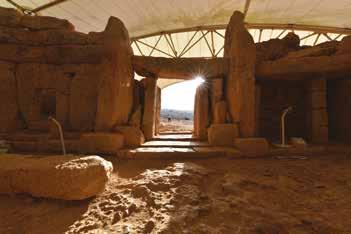

Another area of conservation is the Maqluba sinkhole, a large crater with a surface area of almost 5,000 square metres, said to have been formed when the limestone ground collapsed during a storm in 1343. On its ledge, there lies the little-known St Matthew’s Chapel, which, in all likelihood, already existed at the site when the area caved in; the area also boasts bountiful, fertile land offering a kaleidoscope of fig, pomegranate and carob trees. However, if you hear the calling of the sea, head to Wied iż-Żurrieq, from where you can take a boat and head to the Blue Grotto, a stunning formation of sea caves, so-called due to the reflections of the azure waters on the rocks. And, before you leave the area, refill on some much-deserved sustenance at Coast at Cassarini Restaurant, from which you can experience pristine views of the water – opposite, you’ll be able to spot the small islet known as Filfla, said to be a breeding ground for the white shark.
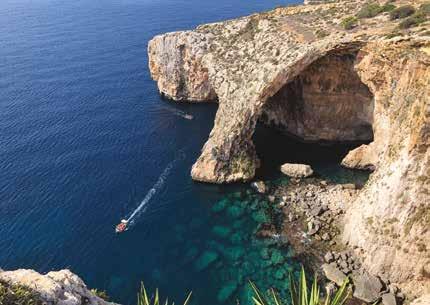
Also located at the tail-end of Malta, the fishing village of Marsaxlokk is emblematic of the traditional, and iconic Maltese portside, represented in thousands of tourist brochures. This is the home of the luzzu, the island’s ancestral boat, characterised by bright paintwork – usually varying shades of yellow, red, green and blue – and the Eye of Osiris, peering out from the bow, said to protect fishermen at sea, a reminder of the islands’ Phoenician past. Today, these much-loved relics of Malta’s heritage are no longer the vessel of choice for the country’s small-scale fishers, due to advances in marine technology. Yet, these bright boats still pepper the waters around Marsaxlokk, with some having been repurposed to host tourists keen to see the coast from the sea.
On the tip of Delimara Point, just a stone’s throw away from the centre of Marsaxlokk, St Peter’s Pool is crowded with bathers in the Summer months, but once the cold snap sets in, its location lends itself to a bracing, hearty ramble through the area’s natural bounty. Make sure to wear sturdy boots, however, and to watch your step – the terrain can get a little tricky. Also in the locality, St Lucian Tower, built by the Knights of St John in the 17th century, and which, today, hosts the Malta Aquaculture Research Centre, is one of the island’s most prominent watchtowers – from where members of the Order of St John would patrol the area for invading marauders. Yet, no visit to Marsaxlokk is complete without a meal at one of its many seaside fish restaurants. There are dozens, each catering to specific tastes, budgets and time constraints, with the eatery, Tartarun, a highlight for a romantic night, or a well-deserved celebratory meal.

The fishing village of Marsaxlokk is emblematic of the traditional, and iconic Maltese portside, represented in thousands of tourist brochures.


Situated in the heart of the island, three suburban villages – Attard, Lija and Balzan – boast leafy neighbourhoods, and centuries-old architecture which recalls British colonial times. Start by experiencing the luscious San Anton Gardens at the President’s Palace, the seat of the republic’s head of state. This public park features cobbled lanes, framed by indigenous plants, flowers and trees, peppered with fountains, and old limestone sculptures. There’s even a small maze for kids (or young-at-heart adults) to run around in, as well as a small pond where families of ducks entertain passers-by and are always grateful for those morsels of bread tossed in their direction. Be sure to walk towards the rear of the gardens for a view of San Anton Palace, built by Grand Master Antoine de Paule, and completed by 1636, a site which was also home to the British Governor from 1802 – two years into Malta’s British colonial period – until the island’s independence was achieved in 1964.

Behind the palace lies one of Malta’s most peaceful, verdant roads, St Anthony Street, upon which 18th century architectural gems lie. Here, palatial homes feature symmetrical designs, colourful wooden doors and shutters, as well as pretty front gardens, and pathways. Built in 1745, the baroque and stately, Villa Bologna, sits on this street, behind high impenetrable walls. You can venture into the villa’s gardens to marvel at its orchards, vegetable and cactus gardens.
Later, head further north to the Valletta Glass outlet in Ta’ Qali Crafts Village to pick up some souvenirs of your trip. Here, you’ll find a selection of artisanal glass jugs, cups, lamps and small, intricately made decorations, in myriad, bright tones, reflecting the verve and colour of the islands themselves. Be careful on how you store them in your case on the way back, though!
Here, palatial homes feature symmetrical designs, colourful wooden doors and shutters, as well as pretty front gardens, and pathways.San Anton Gardens. Photo: viewingmalta.com
Situated on a hill overlooking pristine waters, Mellieħa has long been the mecca for tourists looking for sun, sea, and sand. However, its long stretches of beaches lie (almost) bare during the colder season, although you do find some intrepid visitors attempting the plunge. Fortunately, the village’s bounty can also be seen further inland, with myriad nature parks in the vicinity. The Għadira Nature Reserve – seven hectares of wetlands and a fully-protected sanctuary – is home to exotic species of birds, with over a hundred different species making the site their resting point on the migration route further south. Further north of Mellieħa, towards the beaches of Għajn Tuffieħa, the Majjistral
Nature and History Park, offers hiking routes through Maltese habitats replete with a diversity of breeds and traces of agricultural activity which have sustained these islands over the centuries.
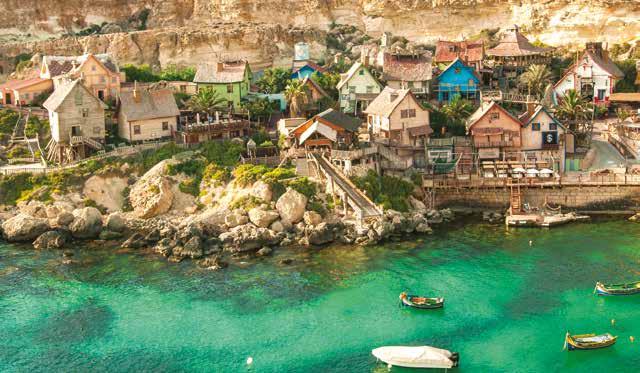
In the vicinity, Popeye Village, the former film set of the 1980s musical starring Robin Williams, comprises over 20 wooden structures built to stand in for Sweethaven Village. Today, families can meet Popeye, and Olive Oyl all year-round while, at Christmas, the park plays host to Santa and his elves, as they frantically prepare for the festivities.

The village’s bounty can also be seen further inland, with myriad nature parks in the vicinity.



Malta’s sister island of Gozo is much-loved for its slower pace of life, greener pastures, and rural character. One of its oldest villages is Għarb, which has seen many of Malta’s conquerors – from the Phoenicians to the Romans and the Arabs (from whom the name derives) – come and go. The village is renowned for l-Għarb Folklore Museum, a celebration of the island’s traditional crafts, focusing on the islanders’ skills in carpentry, winemaking, fishing and milling, which had characterised much of Gozitan daily life in the past. Close by, the Ta’ Dbieġi Crafts Village is the perfect spot to purchase some souvenirs of your time in Malta – here, mouth-blown glass, pottery and filigree can be found at reasonable prices.
The countryside around Għarb is also worth your investment in time: stroll out of the parish square, heading towards the coast, and discover St Demetrius’ chapel, an intimate sanctuary from the elements outside. Continue your amble through the verdant valley of Wied il-Mielaħ, before getting to the cliffs, and stop to experience the natural ‘window’ formed within the limestone by millennia of sea, and wind erosion.
Malta’s sister island of Gozo is much-loved for its slower pace of life, greener pastures, and rural character.


e are living in unprecedented times. Yet there has never been a better time to turn challenges into opportunities. The term digital nomad used to be a catchphrase – a dream for the solo adventurer who was lucky enough to be able to carry their work with them wherever they went. Today this nomadic lifestyle has morphed into mainstream remote work and there have never been more opportunities for people all around the world to embark on this great adventure.
With Malta’s Nomad Residence Permit, digital nomads and remote workers can finally experience this reality in an ideal destination with plenty to offer. Worklife balance has become a priority for many people, notably for people with families. Acknowledging this, the Nomad Residence Permit is open to the immediate family members of applicants.
The family-oriented, close-knit community lifestyle of the local Maltese, makes the island one of the safest places to live in. Our top-notch healthcare services and the high level of our educational institutions and
schools make the country an ideal place for long-term travellers with children.
A high-quality digital infrastructure makes remote working a breeze, but there is also plenty to do on days off and during downtime, starting with the beautiful beaches and open seas, to the hiking trails along scenic routes, to the countless museums and cultural treasures waiting to be explored. Outdoor sports are also plentiful for the adventurous family, and Maltese people are very fond of animals, so be sure that if you have a family pet they will certainly make friends at our ever increasing dog parks and facilities.
In order to be eligible for the permit, you must be a non-EU national who is employed, self-employed or a freelancer with a company registered outside of Malta. The permit is open to all sectors and applicants must reach an annual income threshold of €32,400 gross of tax.
Detailed information can be found on nomad.residencymalta.gov.mt. We hope to see you soon!
On our travels many of us seek out authentic, no-frills restaurants, alongside other culinary experiences, to get a taste of genuine fare and local hospitality.

For locals, a trip to the beaches in the north during the Summer months simply isn’t complete without a stopover at Xufi, or Olympic Bar, for a ftira (sandwich made with unleavened bread) first. Apart from their famous ħobż biż-żejt (bread with a variety of toppings, often tuna, capers, olives and olive oil), the café and bistro boasts a full menu of authentic dishes which means it’s rarely not teeming with people, regardless of the time of day.
“My father and grandfather started it together in 1963, and my siblings and I took it over some 20 years ago,” explains Chris Galea, who runs it today, together with his brothers Frankie and Alvin, and their sister Charlene.
Chris is in charge of the kitchen, while Alvin, Frankie and Charlene take care of the front of house, and whoever of them you run into on your visit, they’re always zooming around to keep up with demand.
“Today, pasta dishes are among our most popular, apart from ħobż biż-żejt – that’s really how we started out,” says Chris.
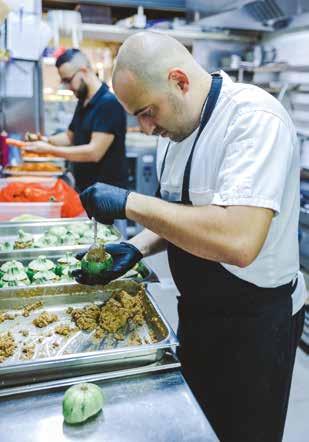
The menu was a lot simpler in the restaurant’s earlier days, he explains, revealing that it mainly consisted of pastizzi (traditional savoury pastry, usually with a ricotta or mashed peas filling), qassatat (small pies),
imqarrun il-forn (baked macaroni) and a simpler version of the ħobż biż-żejt. “We’d also make a lot of tea, as our clients were mostly workmen, fishermen and hunters,” he says, recalling how when he was a boy, Xufi was always full of people in the early hours of the morning, before they’d head out to hunt or fish. Nowadays, with a vaster clientele and wide-ranging tastes, the menu has grown to accommodate them – and the opening hours have become somewhat kinder!
“Throughout the week, our pasta dishes, salads and breads are more popular, whilst at the weekend we serve an à la carte menu, which also features meat and fish. Sunday lunch is particularly busy among families, some of whom come every Sunday!”
In fact, it’s Xufi’s consistency, and the fact that you know what you’re going to get, that keeps people returning, according to Chris. “People come to us confidently, knowing that they will eat well,” he smiles, and the family’s passion for their work is immediately evident.
“We’ve spent our lives here, and the business is important to us – it’s a lot more than just our livelihood. As soon as each of us finished school, we joined the family business – it’s really the only thing we know! As we move forward, it’s a balance between keeping to our roots and traditions, and developing and evolving with the times, whilst retaining the consistency that people have come to know and love.”
Today, pasta dishes are among our most popular, apart from ħobż biż-żejt –that’s really how we started out.
Once upon a time, there were several traditional bakeries boasting a stone, wood-burning oven, along the streets of Malta and Gozo’s oldest villages. Today, most have closed down, but in Xagħra, Gozo, one such bakery has grown, and evolved into somewhat of an institution among locals: Tal-Furnar Restaurant & Bakery.
Run by the fourth generation in a long line of bakers, the bakery is 130 years old, and now operates mainly as a home-style restaurant that delivers the kind of genuine, heart-warming fare many will associate with their childhood on the islands.
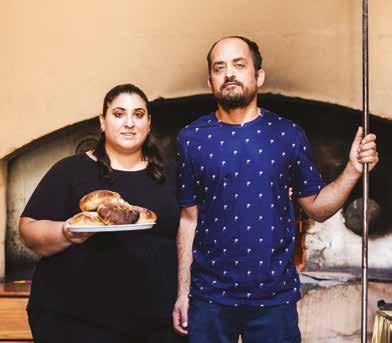
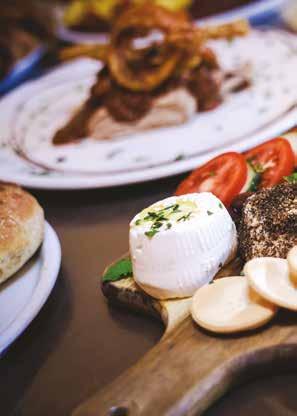
“We are a family of bakers, and the bakery was started by my great grandfather, though his father was also a baker before him,” smiles the friendly Anna Marie Vella, who is at its helm today, together with her husband John. She has recently taken the business over from her father, whose idea it was to open the restaurant alongside the original bakery some 18 years ago.
Up until two years ago, it was open as a fully operational bakery, but since then, they’ve cut back on the bakery side of the business to focus on the restaurant, yet still make bread to order. “We still use the original stone oven my great grandfather built,” she explains, and in the kitchen, Anna Marie is proud of the fact that everything is made by hand. “We don’t have machines, and use the natural mother dough for our bread.”
This approach extends far beyond the bread, she continues, to the restaurant’s well-loved dishes, including Gozitan ftajjar, as well as the dishes they slow cook in the oven, like lamb, suckling pig and pork cheeks. “We don’t make anything in bulk, and always add specialities, so the menu is constantly evolving and changing. We also make our own ravioli, stuffed with Gozo cheese or rabbit. My mum came up with the idea of the rabbit ones, which are fried, and we kept them on the menu, as everybody loved them,” she says.
Apart from the magic of the stone oven, the authentic taste of the dishes here is also down to the produce – John has his own farm, which supplies the restaurant with lamb, rabbit and fresh cheese, instilling a farm to table concept.
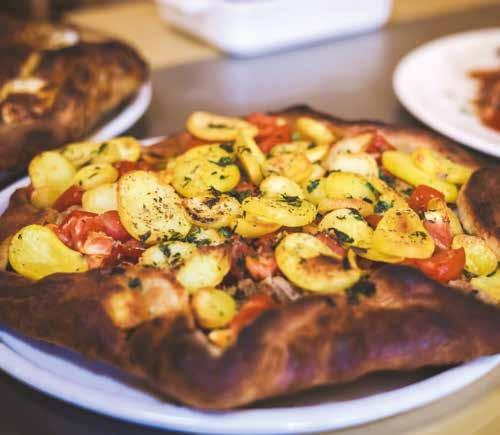

The wood for the oven is also especially supplied, largely by several of John’s carpenter friends, who provide offcuts from their work, often in exchange for a ftira or two! Harking back to the bakery’s past, Anna Marie reflects that this practice actually recalls life during the war, which her mother reminisces about. “The bakery was quite a hub at the time. During the flour ration, villagers would come to make their own bread at the bakery, and my family would cook it for them. They would pay for it with wood for the oven,” she explains.
It is this beautiful family atmosphere and dynamic, coupled, of course, with the food, that keeps customers coming back for more. “For us, it’s important to give people a good experience
– a genuine smile makes all the difference, and makes people feel at home,” smiles Anna Marie, who also has plans for taking her family traditions into the future. “We try to keep it as authentic as we can, while also striving to make it better. For example, we’ve recently started organising bread-making and ftira-making activities, to help share our heritage with visitors and children who visit us on school outings. In today’s busy lifestyle, people don’t have time to spend hours cooking, so it is really reminiscent of a traditional way of life.”
During the flour ration, villagers would come to make their own bread at the bakery, and my family would cook it for them. They would pay for it with wood for the oven.
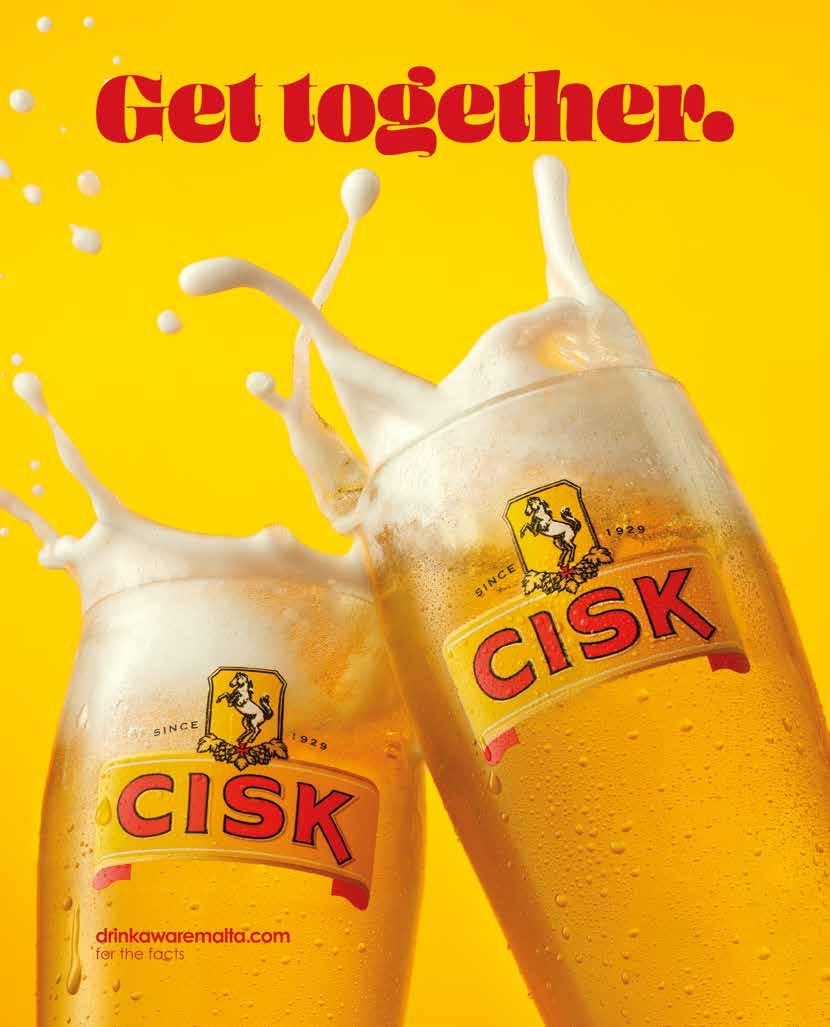
The southern village of Qrendi is perhaps best known for the Neolithic temples of Mnajdra and Ħaġar Qim, but a poorly concealed secret local foodies have come to know should also make the list: the homely, traditional restaurant at the Qrendi Boċċi Club.

Qrendi Boċċi Club has been around for almost 40 years, and Manuel (Leli) Sciberras was one of the many that would play boċċi (a boules-type game) there. Then, 19 years ago, he decided to take it over, together with his brother. “Back then it was a bar, and we used to serve appetisers, like the type you’d find in local village bars, until one day a couple of our customers asked me to serve them
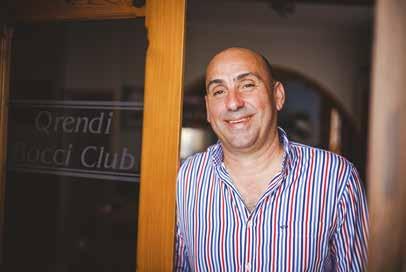
Back then it was a bar, and we used to serve appetisers… until one day a couple of our customers asked me to serve them rabbit.
rabbit,” Leli recalls. From that rabbit, things evolved organically, until the brothers decided to turn the bar into a restaurant.
“I’m not a chef, but I learned to cook from my parents, who are both great cooks – real, genuine food. In fact, when we began cooking here, we made a variety of appetisers, all using a regular oven like you’d have in your kitchen at home,” the affable Leli laughs. “My brother was more keen on keeping it as a bar, but I won in the end, and we stopped doing appetisers and set it up as a restaurant.”

Looking back on those early days, he reflects, “I wanted to be known for rabbit, not because I don’t know how to cook other things, but
that is the focus I wanted for the restaurant, and nowadays it’s rare to find restaurants specialising in only a few dishes.” Such was his conviction that today, the menu at Qrendi Boċċi Club is purposely limited, focusing on Leli’s specialty dishes: rabbit, horsemeat, snails and, more recently, rib-eye.
And since the beginning, Leli has been involved in every aspect of the kitchen, cooking everything himself. He also buys the rabbit and butchers it, insisting that it’s local, so it’s no surprise that he’s adamant on cooking and serving everything fresh: “I’ve been here for 19 years and I’ve never frozen a rabbit. I believe that in business you have to be a gentleman. The money people pay for the food is genuine, so the product you give them needs to be genuine.”
Asked what his top priorities for the restaurant are, he doesn’t mince his words: “I believe in cleanliness, genuine food, and being a gentleman, and I think that is where the restaurant’s success lies.”

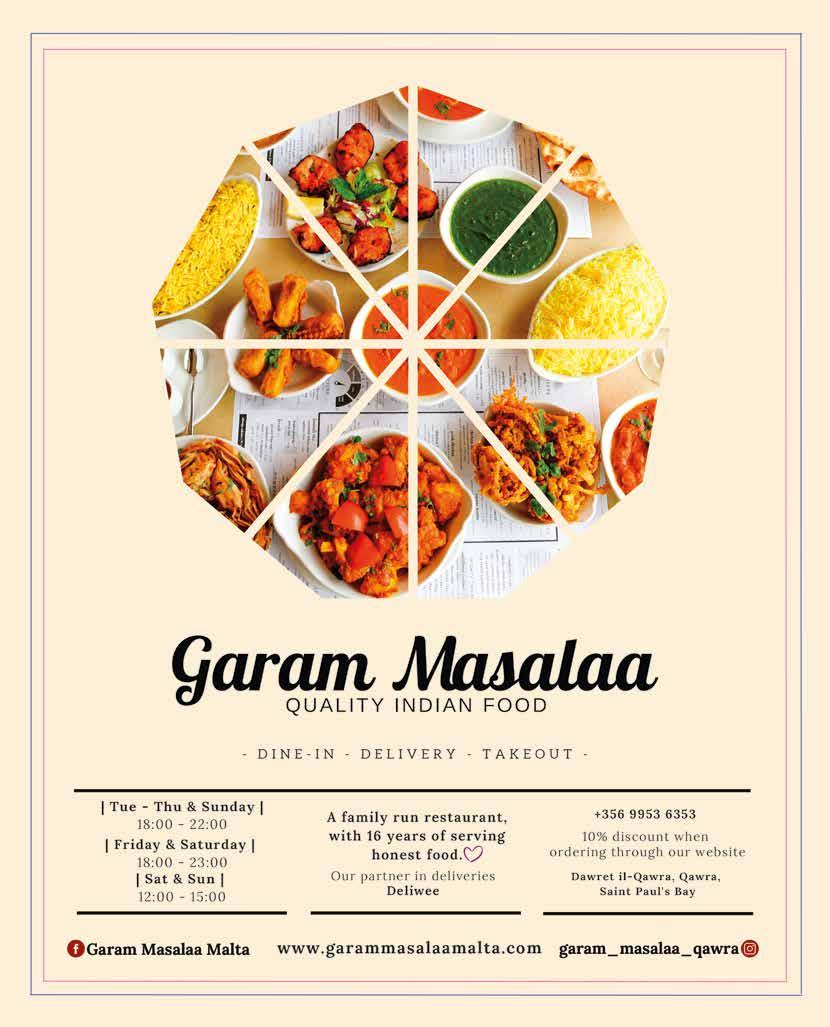

.
The agricultural village of Mġarr is known to many for its rabbit restaurants, where families and groups of friends have flocked for years to enjoy a traditional fenkata (a communal meal featuring different rabbit dishes). Among the restaurants that are celebrated for the quality and authenticity of their food, and rabbit in particular, is Mġarr UNITED Bar & Restaurant, the restaurant of the Mġarr football club – and chef and owner Joel Tabone has a lot to do with that.
Born and bred in Mġarr, Joel got his start in the industry at just 14 years old, washing dishes in a well-known local restaurant at the time. Looking back on the beginning of his
journey, he admits, “I’ve always liked the kind of genuine restaurants that have something for everyone,” and, after studying and working abroad for some time, he returned to his hometown to put his skills to good use.
He took over Mġarr United eight years ago, together with his partner Paul Camilleri, but you likely won’t see much of Joel in the restaurant, and that’s just the way he likes it – the kitchen is truly his domain, where Joel really excels.
“I take care of all the prep and cook everything myself,” he explains, adding that he only has help with plating. We are mostly
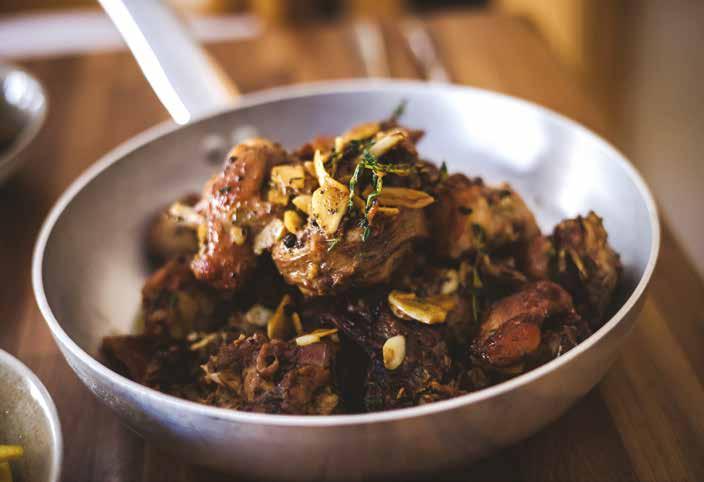
known for our rabbit dishes, horsemeat and snails. I cook the rabbit on order, and never make it in advance. I cut it up beforehand, but cook it there and then,” Joel says, crediting the atmosphere, genuine prices and consistency in the quality of the food with what keeps people coming back. “The only complaints I’ve had are that it can take some time to get the food to the table, but that’s because I insist on cooking everything fresh,” he asserts.


Many of the ingredients in his dishes are, like the chef himself, products of Mġarr, so they don’t have to travel far. “I source some of the produce from a farmer who grows Mediterranean thyme (sagħtar) almost exclusively for us, with the amount I ask him for,” Joel laughs, revealing the one ingredient which he believes makes the rabbit dish extra special.
“We source almost everything from the village,” he smiles, making a sweet mention of a local lady, now in her 70s, who collects and supplies many of the snails for the traditional dish. “She delivers up to 20 kilos a week, and I really appreciate the hard work of people like her.” Meanwhile, the Maltese sausage is also made for the restaurant by a butcher close by, and the cheeselets (ġbejniet) are sourced from Mġarr farmers, as is much of the fresh produce, making the dishes here a true celebration of the agricultural village that’s home to both restaurant and chef.

We source almost everything from the village of Mġarr.
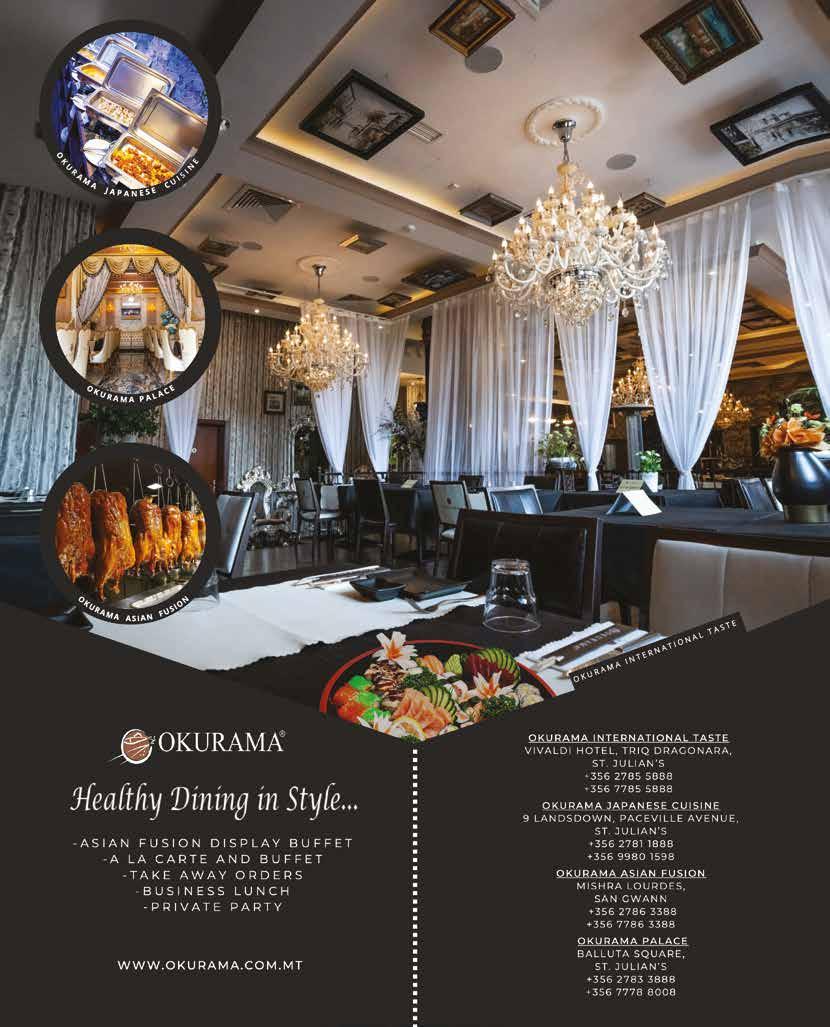
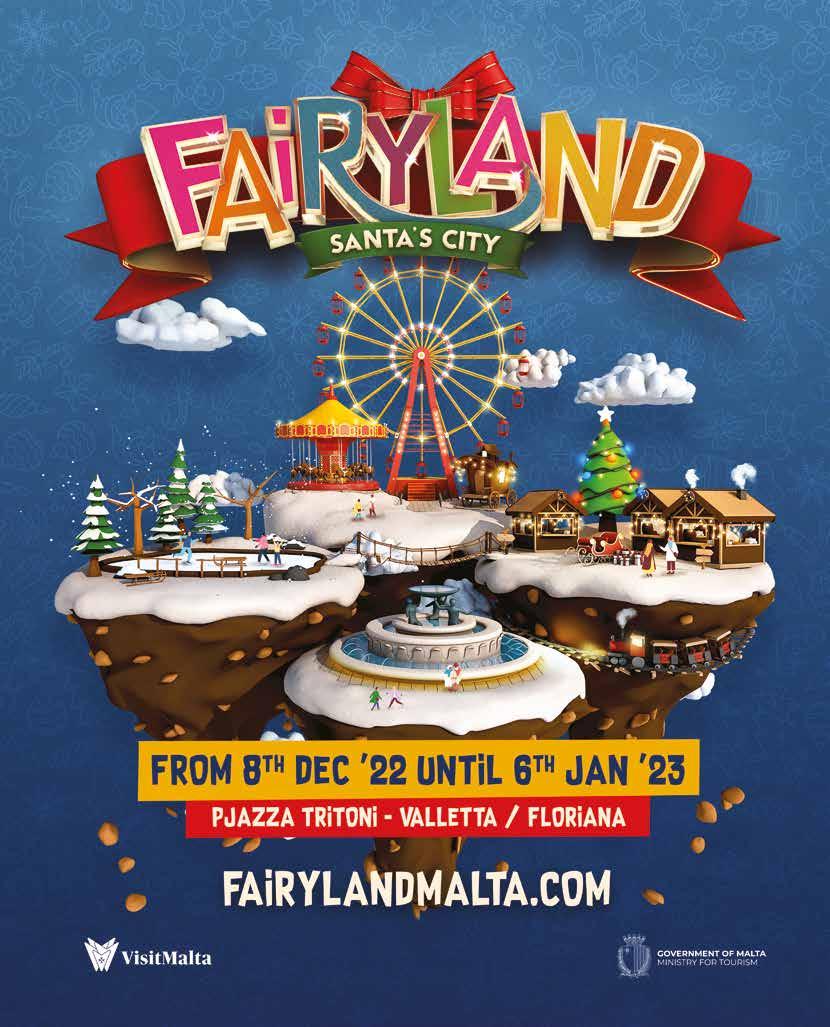
With its beautiful sleek interiors peppered with speckles of bright colours, Fernandõ Gastrotheque is not just a place where one eats; it’s a space where people can enjoy the finer things in life – a phenomenal encounter with exceptional food and superior wines.

Fernandõ Gastrotheque, in fact, is not just a restaurant; it’s a whole new experience for anyone who visits. Set in the heart of Sliema, this vibrant spot has brought new meaning to the restaurant scene in Malta. It’s a place for breaking boundaries, experimenting and becoming acquainted with the sweeter side of life. Fernandõ boasts Malta’s largest wine selection, with over 650 different labels and over 100 wines to try by the glass.
The restaurant has been listed in the Michelin Guide for two years in a row, in 2021 and 2022.
Triq Tigné, Sliema. M: 7922 2023; E: info@fernando.mt

Boasting a list of 125 wines as well as a further 25 wines by-the-glass, Onella strives to offer its patrons an ever-changing selection of interesting wines to choose from.
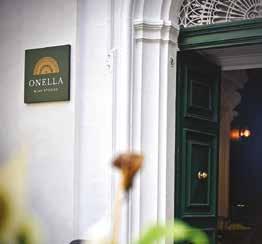
Variety is key at Onella, where you can count on finding bottles of red, white, rosé, and sparkling from all four corners of the world, ranging from the hugely popular to the relatively unknown.
Onella is also home to a fullyfledged kitchen, cooking up a different menu of downright delicious sharing plates every single week. Here is a selection of plates that has made it to Onella’s menu in the past: chicken lollipops, cured duck breast, parmigiana, baked camembert cheese, and octopus carpaccio. At this Naxxar spot, you can get your hands on way more than your run-of-the-mill cheese and charcuterie boards.
Victory Square, Naxxar. M: 7977 3773; E: onellanxr@gmail.com
Inspired by a Passion For Flavour and a heart for serving, Shakinah Indian Gastronomy offers an innovative dining experience, bringing together a fusion of authentic Indian cuisine within a contemporary, high-end ambience. The à la carte menu features a vast selection of authentic Indian curries, made with spices directly from India and by the expert hands of Shakinah’s native chefs. There is no shortage of tandoori dishes on sizzling platters, as well as a naan bread selection to complement any choice. Shakinah has a tantalising collection of signature cocktails and seasonal cocktail menus, packed with flair, flavour and texture.
Curated by Shakinah’s resident mixologists, they are served in a hand-made selection of unique and Instagram-worthy glassware.
Open Mon-Sun: noon-11pm.
11, Ta’ Xbiex Seafront, Msida. T: 2752 2322; M: 7739 9300; E: info@shakinahmalta.com
islands with our handy restaurant guide.
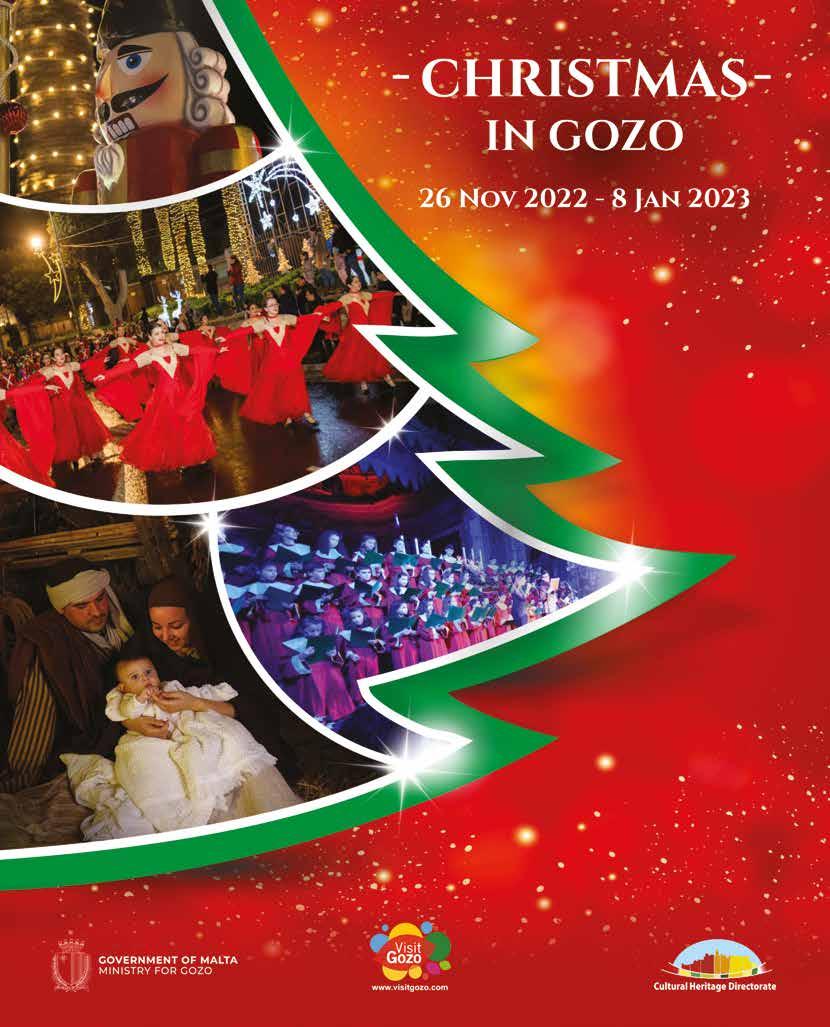
Executive Chef VICTOR BORG needs no introduction. Having worked in the hospitality industry for over 32 years, he’s gained invaluable experience and refined his skills which he uses to lead Under Grain’s kitchen brigade.
GUIDE ME MALTA meets Chef Victor to discuss career highlights, signature dishes, and what it means to have gained Michelin success for the third consecutive year.

Victor Borg’s journey into the world of gastronomy began in 1990, taking an interest in kitchen operations at the young age of 15. “No one in my family worked in catering. I simply took an interest, went to the Institute of Tourism Studies for a show-round and from that day on, I never looked back.”
He climbed the ranks and has been mentored by various local chefs, along with international names, the likes of Gordon Ramsay, Raymond Blanc, David Everett-Matthias and Eyvind Hellstrøm, gaining invaluable experience. “I think it’s very important to get a grasp on all sections of the kitchen to occupy the position of Executive Chef,” he says, speaking about his rich training. “It requires the knowledge of every role in order to ensure the smooth-running of service,” he explains.
A significant milestone in his career is his recent success achieved at Grain, a brand for which he’s occupied the role of Executive Chef ever since its conception in 2019. When the Michelin Guide first came to Malta in 2020, Under Grain clinched the One Star award after only five months of operation and has retained it ever since. In 2022, Under Grain’s sister restaurant Grain Street was awarded the Bib Gourmand accolade after just three months since opening, with the Grain team beating its own record.
“To win a Michelin star is a big achievement for every chef; it’s the best that you can achieve. It’s a dream come true, and I’ve been waiting for this moment all my life. It’s something I cannot put into words and an achievement that I am proud of my team for accomplishing because I have to say, it’s a team effort.”
One cannot pass up the invitation to discuss culinary creations with Chef Victor. When asked about his signature dish, he instantly mentions his renowned baked white chocolate cheesecake served with a passion fruit sorbet at Under Grain.
“I’ve been making this for 25 years and it has evolved through the years,” he says, explaining it takes inspiration from an American cheesecake. “I wanted to create something different but one that clients would like and appreciate. It was a challenge and takes skill and technique to make, but I think it turned out quite well. In fact, it’s still on our menu till today and we cannot remove it because clients specifically inquire about it.”
167, Merchants Street, Valletta. T: 2235 4167.
RAFEL SAMMUT is renowned in foodie circles for his culinary creations. But since 2020, he’s also been helping thousands of families in need of basic food and amenities through the Victory Kitchen, which he runs together with a friend. He talks REBECCA ANASTASI through the journey that has led him to serve up to 2,400 meals a week.
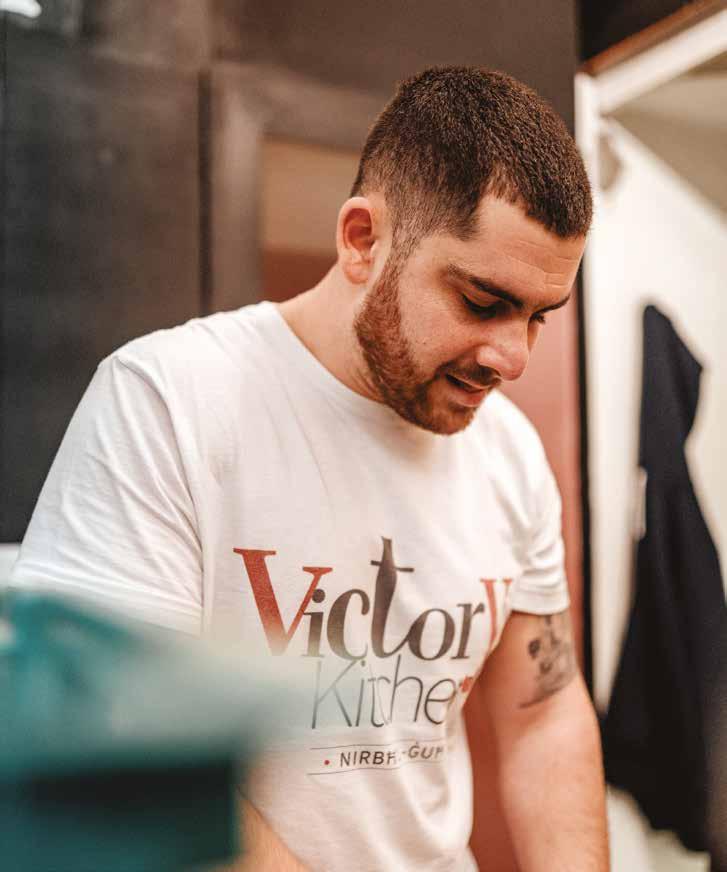
At only 28 years old, young restaurateur Rafel Sammut had already cut his teeth running one of Malta’s best-loved eateries – the Pulled Meat Company – and was building a solid reputation with his new outlet, Briju, in the town of Gżira, when the COVID-19 pandemic hit in early 2020.
“I was stuck at home, annoyed, with the kitchen closed and not knowing when the restrictions would end,” he tells me, as he sits in his restaurant, keeping an eye on preparations for the evening rush hour.
“It was at this time that I was approached and told of families in need, people who had lost their jobs because of the pandemic, and I thought: how can we help? We had chefs on the payroll, an empty kitchen, and we didn’t know how long the situation would last. We felt there was a cause, and we had all the resources in place – it made sense to use them,” Rafel recalls of the inception of the Victory Kitchen, which he runs together with Andrew Arrigo.
From the start, the demand was tremendous. “We went from serving 200 meals a week, at the very beginning of the pandemic, to 2,000 meals over the span of just two months,” he says. At its peak, and for the better part of the 15 months of the coronavirus crisis, the Victory Kitchen was serving 2,400 meals a week. This effort and compassion were given on a voluntary basis – “at the time, this was necessary, so the core team, including the chefs and our logistics partner, eCabs, provided the time and effort for free.”
Today, despite the waning of the immediate crisis, the Victory Kitchen still serves 1,400 meals a week across the Maltese islands. “We know this number may increase over the next year as inflation soars, and with a possible economic recession around the corner. In fact, we are anticipating a rise in these numbers,” he says. Onboarding beneficiaries involves a process of vetting: “often we get contacted either directly by the family, or by an institute, a social worker or another NGO; if it’s the latter, then they would have already reviewed the situation of the applicants to determine what the necessities are, but when we’re approached by
individuals, we have to cross-check the information to make sure the resources are getting to those most in need,” he outlines.
“Sometimes, we have families who also need basic medication, or need help paying their heating or electricity bills. They may even need essential detergents and cleaning products, for instance. During the pandemic, we also organised a system whereby we collected second-hand laptops, serviced them, and provided them to families whose kids needed them to attend school lessons and to socialise,” he states, confirming that the Victory Kitchen caters to a gamut of diverse difficult situations.
“We may provide one meal a day or two. Sometimes, we only help people for specific spans of time. For example, pensioners often have just enough money to get through three weeks of the month but cannot make their funds stretch to the fourth. In these cases, we step in to help,” Rafel asserts.
Due to the complexity of the operation, it has more resources allocated to it than it did in 2020 – “today there are three people working on it, full-time,
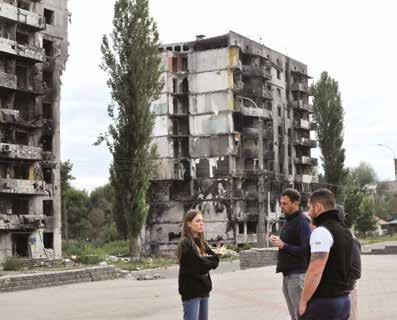
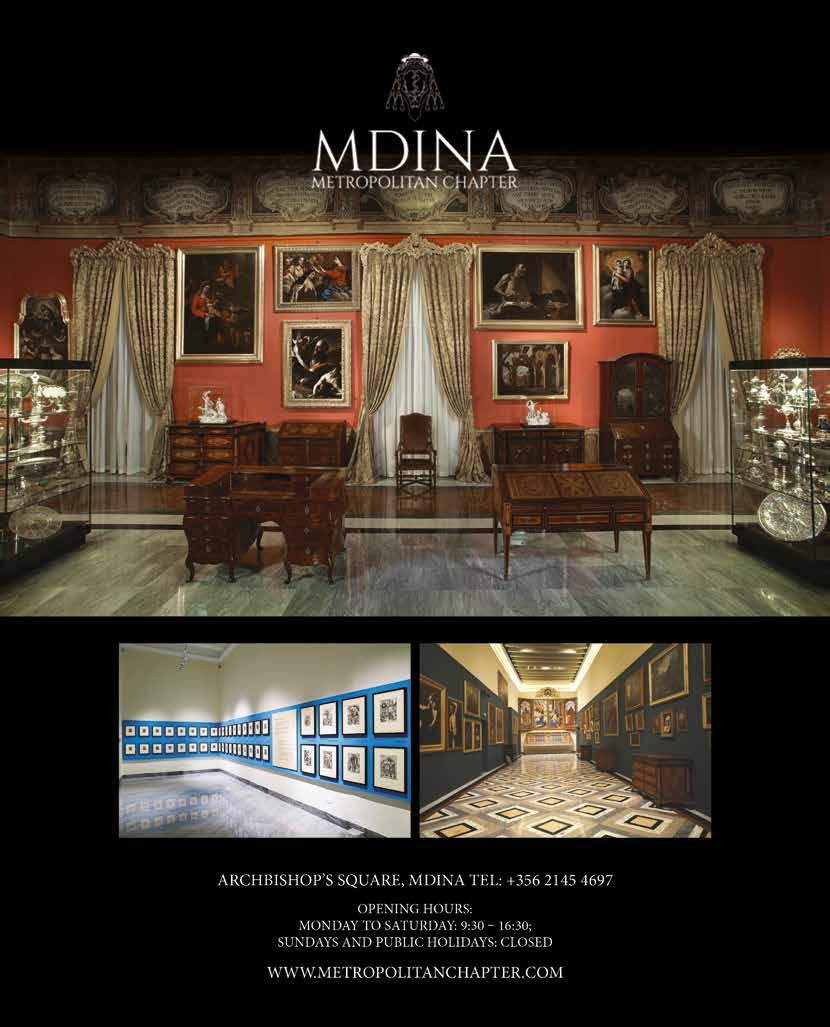
with one person simply responsible for delivering food to households. But, because we now have more dependencies, Andrew and I have more commitment and responsibilities. And, if the funds and resources dry out, we have to see how we’re going to continue and move forward,” he says, explaining that the enterprise costs in the region of €250,000 a year.
“Andrew and I still give our time voluntarily – and we’re in a position where, for now, we can. We each have our fulltime jobs, but we make sure to dedicate a few hours a week to sorting out the logistics, planning the next steps and fundraising,” he says. The Victory Kitchen has, so far, received zero state funding, which has put pressure on both Rafel and Andrew to create initiatives to raise the necessary moneys required to keep the operation going.
“Sometimes it’s stressful, and I worry about getting into debt, since we also have our businesses to run, but we’ve managed to push through,” he smiles, explaining that they benefit from the generous donation of local enterprises.
Fundraising events have also been organised, and these often put both Rafel and Andrew to the test. “We’ve done long swims to raise money for our initiatives,” he describes, swiftly adding “we’re not Olympic athletes or anything.” Despite his self-deprecation, the efforts invested in these activities are substantial. “Once a year we put ourselves through a challenge – this year, we swam 70km without stopping, and we managed to raise almost €120,000. Last year, we swam around Gozo, which took us 14 hours, and we managed to raise €60,000. Every year, there’s more momentum and the push has started to pay off,” he smiles.
More recently, the team organised a grand event in London. “We felt we needed to raise some money for the needy in Ukraine,” Rafel explains. The project involved taking 18 Maltese chefs to the UK capital to cook a Michelin-level dinner for 105 guests at the Corinthia Ballroom. “We sold tables and we had an auction, so there were a lot of logistics to organise,” he attests, saying that the event was a success, with much-needed funds raised. “We are always growing and learning, so hopefully, we’ll raise more money next time.”
This is testament to Rafel’s commitment to providing support within a wider scope than the Victory Kitchen encompasses. “The NGO Happy Initiative, for instance, tries to help anyone who needs it. We pump our efforts into helping charities overseas – we’ve helped a number of school orphanages in Africa, as well as homeless shelters in Germany. And lately, we’ve also been involved in helping the needy in Ukraine.” Indeed, Rafel describes his visit to the country a few weeks ago as

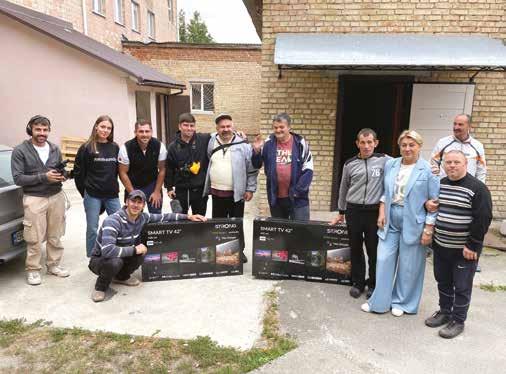
transformative – “in just two days, I fell in love. Now, when I see something happening in the news, I feel it’s happening here. Unfortunately, the war doesn’t seem to be coming to an end; rather, it feels as if it’s escalating.”
In the context of a fraught world, such commitment to social responsibility is, for Rafel, the underpinning to a ‘good’ life. “I’m a strong believer in karma, and I believe you receive the energy you put out in the world. However, showing compassion is more than that: it’s a powerful feeling which gives you as much satisfaction as you invest in it. If you get a parent calling for help because their child needs treatment – and you manage to acquire this for them – you’ve made a life-changing difference in their life; you cannot put this feeling into words,” he says.

Looking ahead to 2023, Rafel concedes to being at a bit of a crossroads. “We have applied for a permit to build a new kitchen, and there’s a high chance we’re not going to get it. In that eventuality, we have to rethink the entire year,” he says, explaining that, currently, they rely on the generosity of Vecchia Napoli restaurant at the Salini Hotel, which has lent out part of its premises to prepare the food for the needy. “We’ve worked with them for the better part of two and a half years, but now it’s time to move. And, if we get the kitchen in place, we can hire another person and grow to meet the surging demand, spurred by the economic challenges we see unfolding around us,” he says.
In the meantime, as Rafel and Andrew wait for news, they continue the good work they set out to do more than two years ago. “We just focus on coming up with solutions, contacting the right people to meet the needs which are brought to our attention. Now, we have enlarged our network, so we know who to call, and we’ve become wellversed in being the middleman, so to speak. After all, it’s about the heart and effort you put in – that’s enough to make a difference.”
If you get a parent calling for help because their child needs treatment – and you manage to acquire this for them – you’ve made a life-changing difference in their life; you cannot put this feeling into words.
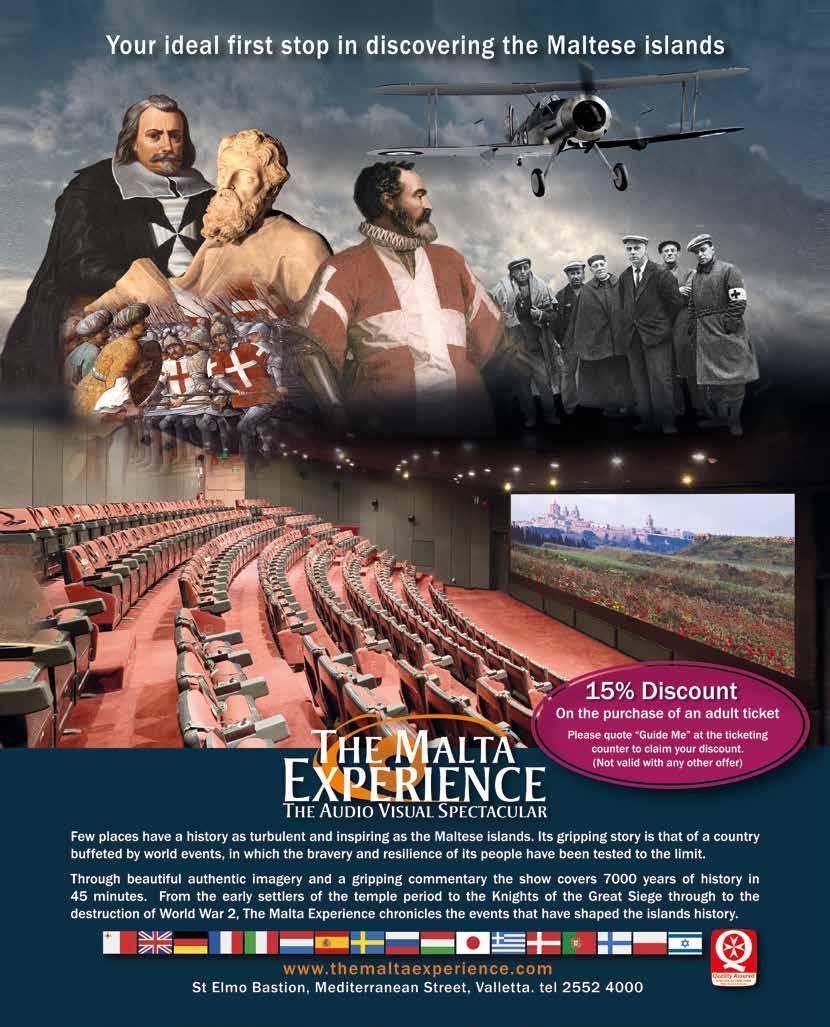



Since Malta joined the European Union almost 20 years ago, and later adopted the euro, the islands have become a major jurisdiction for business and investment, particularly in the fields of financial services and gaming, as well as shipping and aviation registration.
Over the decades, Malta has also evolved into a transcontinental hub for trade, a popular tourism destination and a top performer in high-tech industries such as high value-added manufacturing, aviation maintenance, financial services and iGaming, cryptocurrency, and Artificial Intelligence. This high-paced activity has attracted an influx of expats, who contribute to render the social and economic landscape truly exciting, diverse and cosmopolitan – could you be the next to join?
Whether you’re searching for a fresh start in life, or simply looking to grow your business, Malta could be the steppingstone you’ve been waiting for. But before you make the move, here are some things you need to know.
Population 516,000
As of April 2022 according to the National Statistics Office Area 316 km2 Currency Euro
Forecast GDP Growth 4.9 per cent in 2022
According to the European Commission’s forecast published in Summer 2022
Unemployment Rate 3 per cent
As at September 2022 according to the National Statistics Office
With a well-established regulatory environment based on EU law, a favourable tax regime, attractive Government incentives and a well-educated and highly motivated workforce, Malta can be a very attractive place for a foreigner to set up a business. Doing business in Malta does not only mean access to trade in
directors can and cannot do. It is important to identify the right legal firm, accountancy and audit firms, as well as business consultants to guide you during this stage.
Every company needs some capital to start off, however small. As a new business owner, you need to open a bank account in the company’s name and inform the bank that you are depositing your share capital. The money will go into a holding account until the company is properly registered. The receipt issued will need to be presented in the next stage.
The filled-in company registration form, together with the memorandum and articles of association and the share capital deposit slip need to be presented to the Malta Business Registry. Registration is done within two to three days and the registration fee depends on the size of the company.
the EU, but also gaining access to Africa and the Middle East, as Malta has developed healthy business ties and beneficial fiscal agreements with various countries in these two regions too. For those who wish to start a business in Malta, there are seven stages to keep in mind:
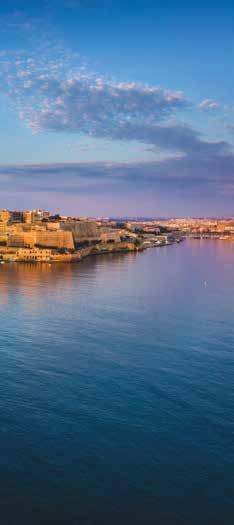
A limited liability company gives your business a more trusted face and protects you as a shareholder in case of defective products or lawsuits. On the other hand, there are more bureaucratic steps to follow when creating such a company (as opposed to starting a business as a selfemployed person), such as undergoing an annual audit, so make sure your business is viable before registering it as LTD. You need to be at least two shareholders to register a company.
If you are going to proceed with a limited liability company, then you need to draft the company’s memorandum and articles of association. These documents are important for registration, but they also detail what the company, its shareholders and its
Once the trade name is approved and the memorandum and articles of association are filed with the Malta Business Registry, the company is almost ready to start operating. However, before that, one must also check if any special licences are required. Furthermore, each business in Malta must have a tax identification number. While this is free of charge to obtain, once a year you will need to fill in a tax return form. This is another step where the assistance of a trusted accountant, audit or legal firm is invaluable.
You also need to register with the VAT Department to obtain a VAT number. Furthermore, if you have a limited liability company and you intend on hiring personnel, you also need to register as an employer and obtain a PE number. Both steps are free of charge and can be carried out online.
Jobsplus is responsible for all employment registration in Malta. You need to fill in a form for each employee upon registration, and again upon termination of each employee. The process is quick and free of charge.
Government department Business First can help you with all of these steps, and can be easily reached through their website, www.businessfirst.com.mt, or over email.
Once you’ve decided to move to Malta, you’ll set about finding the perfect property for you and your family, or the new headquarters for your business. But what will that involve?
• The cost of living in Malta remains lower than most European countries, but rent has become more expensive in recent years. You can expect to pay at least €900 for a flat in a central part of the island, and far more if it’s in one of the more in-demand locations such as Sliema or St Julian’s. Office or commercial spaces have seen less of a spike in prices, but as with homes, are largely dependent on location.

• Most people start their search through a property agency, of which there are countless ones on the island. Some specialise in commercial properties, others in residential. It’s worth noting that many properties are listed with several estate agents, so you may end up viewing the same property several times if you’re not careful.
• Once you’ve viewed a few different properties, settled on one that you want to buy, and your offer has been accepted, you will be asked to sign a promise of sale, known in Maltese as a konvenju. This is a legally binding agreement between you and the seller, and will involve a notary public.
• At this point you are obliged to pay 1 per cent of the 5 per cent provisional stamp duty. The total sum is payable upon completion of the sale. You will also need to pay a deposit which is usually around 10 per cent of the agreed sale price.
• You don’t need a permit to buy a house here unless it’s a secondary residence. But if you are not a citizen of an EU country, then you will need an Acquisition of Immovable Property in Malta by NonResidents Permit (AIP).
• You must also obtain a permit if you are considering renting your property as a holiday home, and any earnings must be declared to the authorities for tax purposes.
While Malta is a tiny island, slow-moving traffic during peak hours, reliance on private cars, and vast differences between one area of the island and another make it necessary to think deeply about what you want from your new hometown. Here’s a guideline of what to expect from different parts of Malta.
The natural choice for most expats. These two towns have a large expat community, an exciting social life, and are close to many businesses and places of work. However, they’re the most expensive addresses in Malta, and if you’re looking for a quiet place to settle down, they’re probably not it.
The capital city of Malta has undergone a renaissance in recent years, and it is now one of the most exciting places to be. All buses end their journey in Valletta, so public transport to and from here is excellent. However, be prepared to pay – it’s not cheap. The neighbouring suburb of Floriana may have more reasonably priced options.

These areas are located in the middle of the island and have good transport links to most other towns and villages in the island. Prices are moderate, and they are mostly residential, perfect for raising a family.
Plenty of expats live in these towns. Since both of them can be considered resort towns, it’s worth noting that they get particularly hectic in Summer with the influx of tourists, but are much quieter throughout the rest of the year.
The southern part of the island is worth considering if you’d like to live in a charming, traditional village or town. However, fewer expats tend to live here, so if you’re in search of a community of fellow emigres, this may not be for you. Having your own transport becomes essential in this case, and learning at least a few words and phrases in Maltese will endear you to the local, close-knit community.
Quiet, peaceful and with plenty of green spaces which Malta is sorely missing, the island of Gozo is accessible via a ferry that leaves Ċirkewwa every 45mins. Since the commute may be tiring to do every day, it’s perfect for retirees, people who are planning to work from home, as well as a holiday residence.
In recent years, Malta has positioned itself as a prime destination for several tech companies looking for a secure, reliable and reputable jurisdiction to base themselves, drawing companies from a wide spectrum of digital and innovative sectors, ranging from blockchain to FinTech to Artificial Intelligence.
Speaking of blockchain, Malta was dubbed as the ‘Blockchain Island’ in 2018, being the first country in the world to issue a comprehensive set of regulations and guidelines on blockchain, Initial Coin Offerings, technology arrangements and financial assets. Today, it is reaping the results of this proactive stance through the establishment of a number of FinTech and crypto companies on the island, while also widening its scope to attract companies that operate in all corners of the digital space.
Three bills were passed into law in 2018 which set up the Malta Digital Innovation Authority (MDIA) Act, the Innovative Technology Arrangements and Services Act (ITASA) and the Virtual Financial Asset (VFA) Act.
The MDIA acts as a communicator between key national bodies such as the Malta Financial Services Authority (MFSA), other relevant Government regulators such as the Malta Gaming Authority (MGA) and operators. It also regulates new and emerging technologies. The ITASA is geared towards regulating technology service providers, while the VFA Act regulates Virtual Financial Assets. Such laws limit the scope for fraudulent activity, provide certainty to investors and also provide a legitimate legal framework in which operators can do business.
Another economic niche creating significant buzz on the islands is Artificial Intelligence, backed by Government’s vision to put Malta on the map with a National Strategy for AI. This includes discussions on the subject with stakeholders to identify policy, regulatory and fiscal measures aimed at strengthening Malta’s appeal as a hub for foreign investment in this sector. In fact, Government’s strategy has been ranked 10th among 54 countries in the Global AI Index by Tortoise Media, surpassing countries such as Estonia, Sweden and Austria in its drive to adapt and embrace the rapid developments presented by these technologies.
To date, the MDIA has certified five Systems Auditors (SA), the roles of whom are to audit the Innovative Technology Arrangements that an applicant proposes, including those concerning Artificial Intelligence.
Meanwhile, local businesses are starting to make use of AI to trim costs, such as having a chatbot as the first point of contact for customer queries. If you’ve got a healthy risk appetite, investing in AI in Malta in these early stages could ultimately yield excellent results, before competition begins to grow. If you would like to get a better feel for the industry and the network of people within it, keep an eye out for conferences and events on AI that typically take place in Malta between September and November.

A regulatory push for all-things digital makes Esports another niche area with interesting investment options. The number of skilled software developers, graphic designers and IT proficient workers makes Malta an attractive option for investors. And with an exciting enough project, it should not be difficult to find skilled workers to fill the roles.
With the global Esports industry projected to reach a global audience of 646 million people by 2023, it’s no surprise that Malta has opened its doors to Esports companies just as it did with gaming. While still a budding industry locally, Government’s commitment through ‘Malta’s Vision for Video Games Development and Esports’, launched in May 2019, will help propel this sector forward, with plans to grow it from 0.1 per cent to 1 per cent of the islands’ GDP in 10 years.
Tying all this together is the Maltese Government’s plan and commitment to transform the country’s economy into a digital one in the coming years, enhancing ICT policy development and implementation that is intended to meet the expectations of citizens, civil society and businesses –and its efforts are paying off.
In the EU’s most recent Digital Economy and Society Index (a composite index that summarises relevant indicators on Europe’s digital performance and tracks the evolution of EU member states in digital competitiveness), published in July 2022, Malta maintained its ranking from 2021 and ranked sixth among 27 countries for its digital performance, which includes connectivity, human capital, use of internet, integration of digital technology and digital public services. Placing ahead of Estonia, Luxemburg, Austria, Germany, Belgium and many others, Malta is well-positioned to achieve its target of becoming a leader in the digital economy, creating a robust foundation for digital sectors to reap fruit.


MUSCAT AZZOPARDI consults local fashion insiders DANIEL AZZOPARDI and CAROLINE PARIS for the lowdown on the key trends to watch this Winter season, for both men and women.



The heralding of a new season is always an exciting time for fashionistas, as seasonal trends and fashions from big designer collections begin to make their presence felt on the street. As the temperature begins to drop on the Maltese islands, it’s time to make way for Winter trends, and as ever, there’s plenty to look forward to!


“The word on every fashion person’s mouth right now is gorpcore,” begins Daniel Azzopardi, digital/ video creator, founder of Golden Lion Vintage and three-time winner of the Fashion Blogger Award at the Malta Fashion Awards. Explaining the trend he’s looking forward to sporting himself this season, he says, “think utilitarian outdoorsy pieces like puffers and cargo pants mixed with things they wouldn’t necessarily ‘go with’, like formal penny loafers and the like.”
 DANIEL AZZOPARDI
DANIEL AZZOPARDI
The word on every fashion person’s mouth right now is gorpcore.
According to Daniel, a key piece for men this season will also be carpenter jeans – a style that features several pockets and loops (traditionally in order to accommodate tools) and which are often loose around the leg. “I need to find a pair actually,” he laughs.
When it comes to womenswear trends, Caroline Paris, fashion business consultant, writer and digital media expert, is looking forward to a specific colour coming into the spotlight: pink. “Pink is one of the hottest
colours this Winter and I’ve always been a fan. For me, pink represents a pure, almost childish love for fashion and pretty things; it makes me feel somewhat frivolous but always in a good way,” she smiles, adding that blazers and trouser suits are another big trend right now, with this season’s blazer being oversized and somewhat masculine, in contrast to the playful pink trend.
Looking ahead towards the festive season, Caroline highlights sequins as the trend to watch – “large ones preferably” as well as black, admitting, “black is always a trend but it seems even more present this time round.”

As for accessories, Daniel champions skinny satin scarves for men this season, “again, worn with things that wouldn’t normally fall under the formal category – I love the mix of opposite fashion categories!” And for Caroline, hats are going to be the accessories trend to watch. “I’m a huge hat collector and I generally try to buy a new hat whenever I travel to add to my collection. I have various styles – vintage ones included – and I love pairing them with different Winter coats,” she says.

“The best advice I ever got when it comes to style is... no one cares THAT much. So have fun with it and don’t overthink it! The fastest way to look good is to feel good, so that’s my advice. Oh, and avoid hypebased trend pieces... those never last!”
“I’ve always felt that everyone should spend some time in a large shop trying on different styles, cuts and patterns with the aim of understanding how things work on their body. Each of us has a unique and different body type, and chances are that what looks one way on one person will look different on another. By gaining this awareness, you can really start to carve your own style and image, and feel more confident in trying out different styles. It takes time though, and sometimes I still look in the mirror and see something very different to what I expected to see, but I see this as learning something new each and every time. Keep in mind that the most important thing is that you dress for yourself not others, so be happy with what you see in the mirror.”


Moving on to shoes, Caroline says platform boots and heels are going to be big news for Winter, “the higher the better!” Having said that, she also makes a case for having “a pair of good sturdy black ankle boots” in your wardrobe, as a basic that you’re bound to get a lot of wear from. “It is totally worth investing in a good and comfortable pair – I’d say they’re one of the best wardrobe investments for Winter,” she maintains, adding that another shoe trend making a return this season is overthe-knee boots. “It’s not a great one for those of us who are under 5’4’, but it’s possible to make a high heeled version work paired with a mini skirt.”
For Daniel, menswear shoe trends to look out for include “any sneaker that looks like it’s stuck in the ‘70s”, as well as golf-style “clog-looking slip-ons.”

On a personal level, Caroline and Daniel both agree that the best thing about dressing for the Winter season is layering – an unsurprising view, considering Malta and Gozo’s lengthy hot summers! “In the hotter months, sometimes it’s just about wearing the least amount of clothing possible, which doesn’t always help the concept of creating and styling interesting outfits. In Winter, you can put together different outfits created from a number of pieces, which opens up to so many possibilities,” says Caroline. And Daniel agrees, taking it a step further, “us boys don’t have too many options during warmer months so Autumn and Winter bring in more things to work and play with.”

Pink is one of the hottest colours this Winter and I’ve always been a fan.
CAROLINE PARISValentino
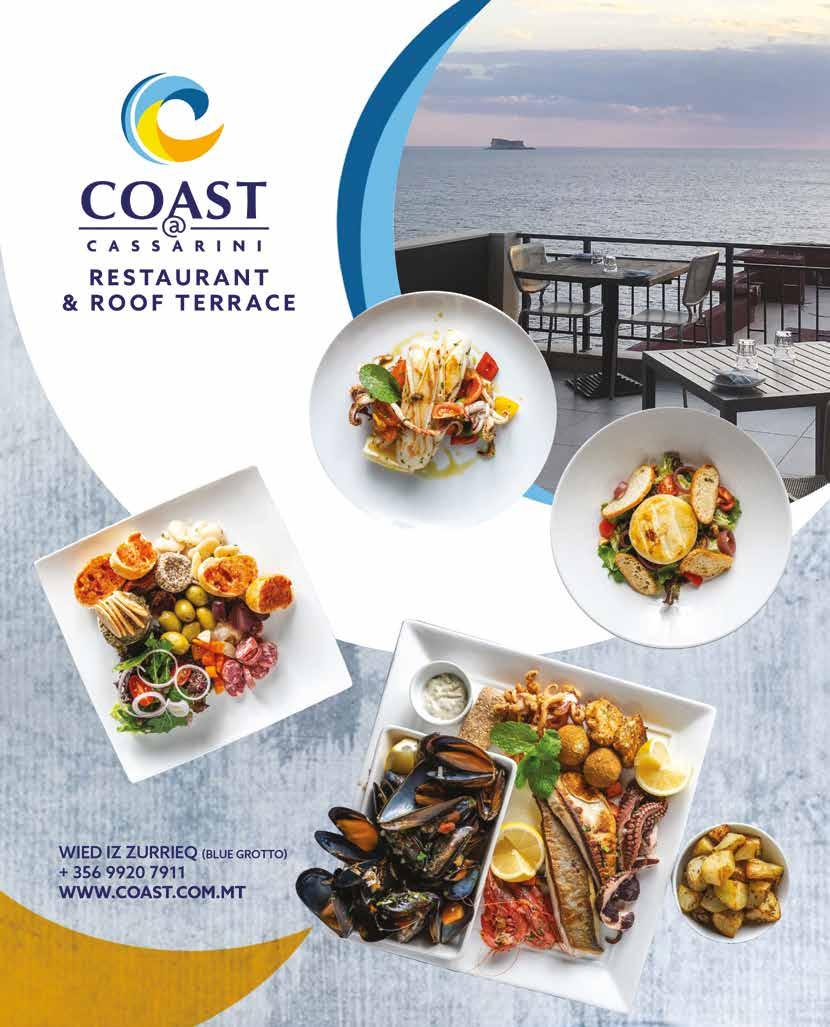
Rockstud Embellished Shoulder Bag
Rockstud-embellished shoulder bag by Valentino featuring quilted signature Rockstud embellishment, foldover top, twist-lock closure, main compartment and single rounded top handle.


Embroidered-motif Quilted Jacket Palm Angels’ use of contemporary detailing is showcased on this quilted jacket from the AW22 collection. Featuring embroidered palm-tree motifs at the front and back of the design, the garment is as instantly recognisable as the brand.

An Italian-made belt in smooth leather, detailed with a gold-plated Thomas Burberry Monogram.


The Classic Check Cashmere Scarf The Classic Cashmere Scarf in check is made at a 200-year-old mill in the Scottish countryside. Using 30 different steps, the scarf is woven on traditional looms. The fabric is washed in local spring water and carefully brushed with teasels for a super-soft finish.
Roma Low-top Sneakers

Roma low-top sneakers by Dolce & Gabbana
featuring logo patch at the tongue, branded heel counter, perforated detailing, round toe, front lace-up fastening and flat rubber sole.
SARTO, Ross Street, St Julian’s, T: 2202 1601
One Stud Patent Leather Pump with Matching Stud Valentino Garavani ONE STUD patent leather pump with maxi stud decoration.


Tulle Tiered Dress
Tulle tiered dress from TWINSET featuring pink, tulle trim, tiered skirt, round neck, long puff sleeves and aboveknee length.
A refined suit by BOSS Menswear. Cut to a defined fit for a sharp profile, this threepiece suit is crafted in virgin wool blended with stretch and woven with a timeless pattern. Logo-print lining and a signaturestripe hanging loop at the interior complete this versatile ensemble.
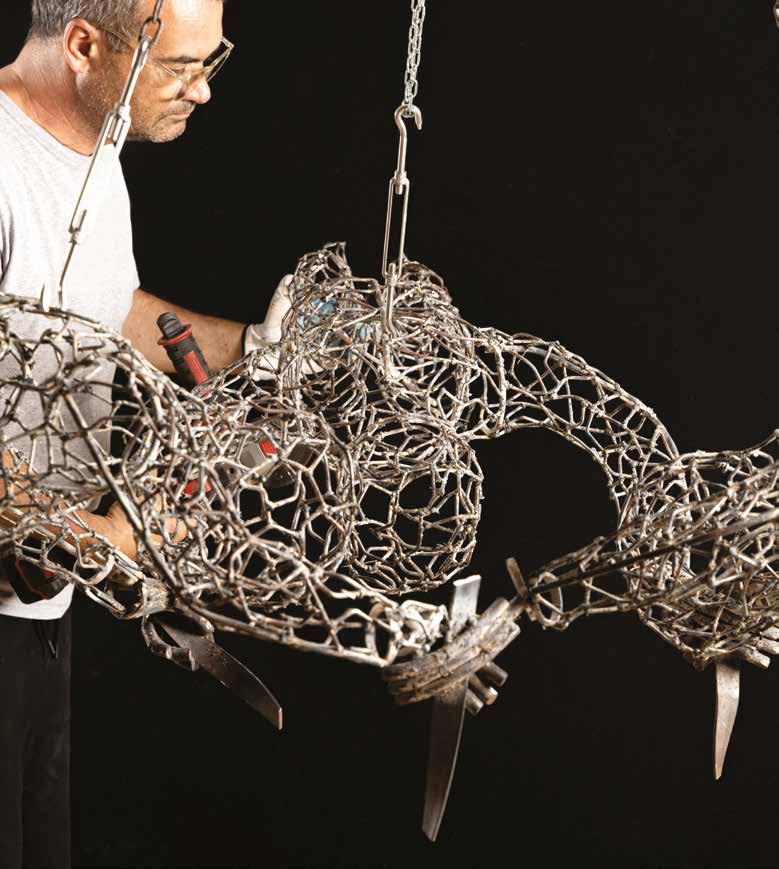
WALLACE FALZON’s art is an eclectic collection of compelling works, each telling a story. SARAH MUSCAT AZZOPARDI meets the artist at his studio who shares an honest perspective about the healing power of art.


As I’m shown around the veritable Aladdin’s cave that is Wallace Falzon’s studio, stepping over salvaged materials destined for use in future works and admiring piece after piece in an eclectic collection which take on several distinct forms – and tell different stories – I am surprised to learn that the artist’s journey into art only stared in earnest some 10 years ago.
It’s a story that is representative of what beauty can stem from tragedy, and one that Wallace tells quietly and with humility.

“At 45 years old, I was diagnosed with a rare, chronic autoimmune condition that affects my nerves,” he begins, likening receiving the news to being hit by a train. At the time, he had a thriving career, serving as company director within the local business sphere, but his diagnosis led him to reassess what he wanted out of life, and instilled a yearning to better express himself. The medium which would enable him to do this, he discovered, was art.
“I’m an introvert, but through art I found the medium to express myself. I began taking care of myself psychologically, through the expression of art, and realised I had enough of my business life,” he reveals.
Being completely self-taught, Wallace started with the medium of painting, before moving on to sculpture. For this reason, his collections are very eclectic, in that he doesn’t feel bound to any one style.



He started out humbly, painting on anything he could find –from gypsum boards to recycled paper. “From there, I made it my mission to start recycling everything, so the majority of artwork you see here utilises a variety of materials such as glass and recycled construction material like cement boards,” Wallace continues, admitting that while it’s much more labour intensive, and likely not viable for everyone, it makes it all the more satisfying. This extends to frames, which are often made of recycled pallet wood, he continues.
“I developed my own style from there. In this way, I use my lack of classical art training to my advantage – risk was part of my nature, and I feel comfortable with it, and now feel that anything
can be developed into art,” he maintains, pointing out one piece, which, as its base, utilises an old street sign which had been trampled by cars.
As we continue our chat, he highlights another sculpture, Home is Where the Anchor Drops, explaining that the main material used in this piece is a complete chain and anchor salvaged from the sea. It also features a net, crafted out of welded construction nails.

Since starting out, Wallace has exhibited his work at four solo exhibitions and taken part in a few collectives. Throughout, his work has continued to be largely autobiographical, featuring subject matter related to current affairs, or specific situations which stick out to the artist. “Each piece tells a story – I don’t create art to make ‘pretty pictures’. Even when I’m in a good mood and choose to paint a landscape, for example, there’s always some emotional connection to it.”
Detailing his creative process, Wallace says that he starts every morning “with a feeling that I need to do something.” This could be a thought, and can often change as he embarks on the process, from when he starts working on it to the finished result. “I often
don’t create a blueprint or design for a finished piece as it comes straight from my head, which can be tricky to convey in larger projects and structures, for which I need help to put heavier pieces together,” he shares.
Inspiration, he says, can be found everywhere, and when he’s not feeling particularly inspired, he turns to self-portraits as an intriguing form of therapy. “When I feel I can’t work, I do a self-portrait and try to portray that mood. What’s interesting is that, once you portray that feeling and it’s down on the canvas, it’s externalised, and you’re released from it.”
His medical condition also plays a part in his artistic process, and today, he has learned to take it in his stride. “I receive treatment monthly, and utilise this time to reflect and further educate myself, so no time is wasted. My work also expresses the period at which it is created,” he explains, revealing that in the immediate period before he receives each treatment, his control over his right hand is limited as a result of his condition, and the work produced during that time is more expressive, with finer details being left for after the treatment. “It has become part of my schedule,” he smiles sagely.
Apart from exhibiting his work and receiving recognition from the local artistic community, Wallace considers being commissioned to work on his first public monument, commemorating the elderly who lost their lives during the COVID-19 pandemic, as an important milestone in his journey so far. Revealing the process and his thoughts behind the monument, which was unveiled in the seaside town of Sliema earlier this year, he says, “when I was approached by the Maltese Association of Gerontology and Geriatrics to create this monument, I immediately gave them my idea for it, and they were impressed enough to commission it. I wanted to do something contemporary but figurative, so as to appeal to both sides of the art community, and it took several months to construct. I did it all at cost price, because of the voluntary nature of the organisation, and was very pleased with the result.”
As for what lies ahead for Wallace, well, he says, “the sky is the limit. If you work, opportunities will come. As long as I am able to operate, I will continue. The future is production, for as long as I feel fit.”
Each piece tells a story – I don’t create art to make ‘pretty pictures’.Photo: Andrew Zarb
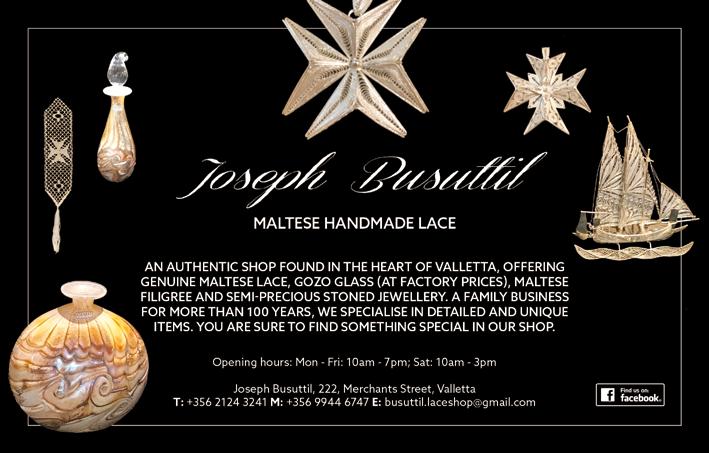


Paul’s Pro-Cathedral

